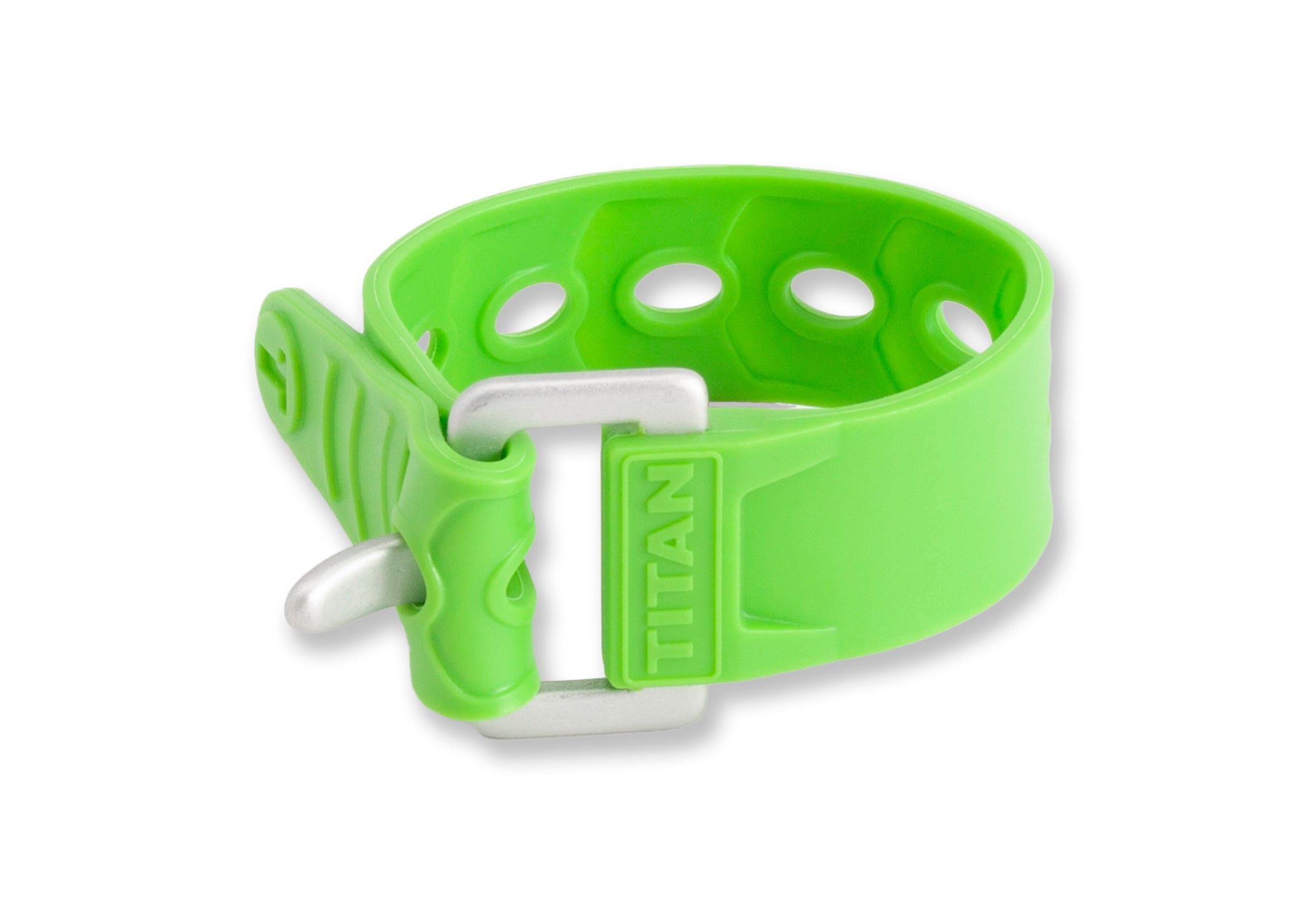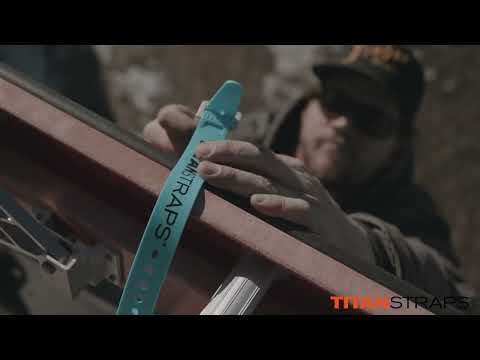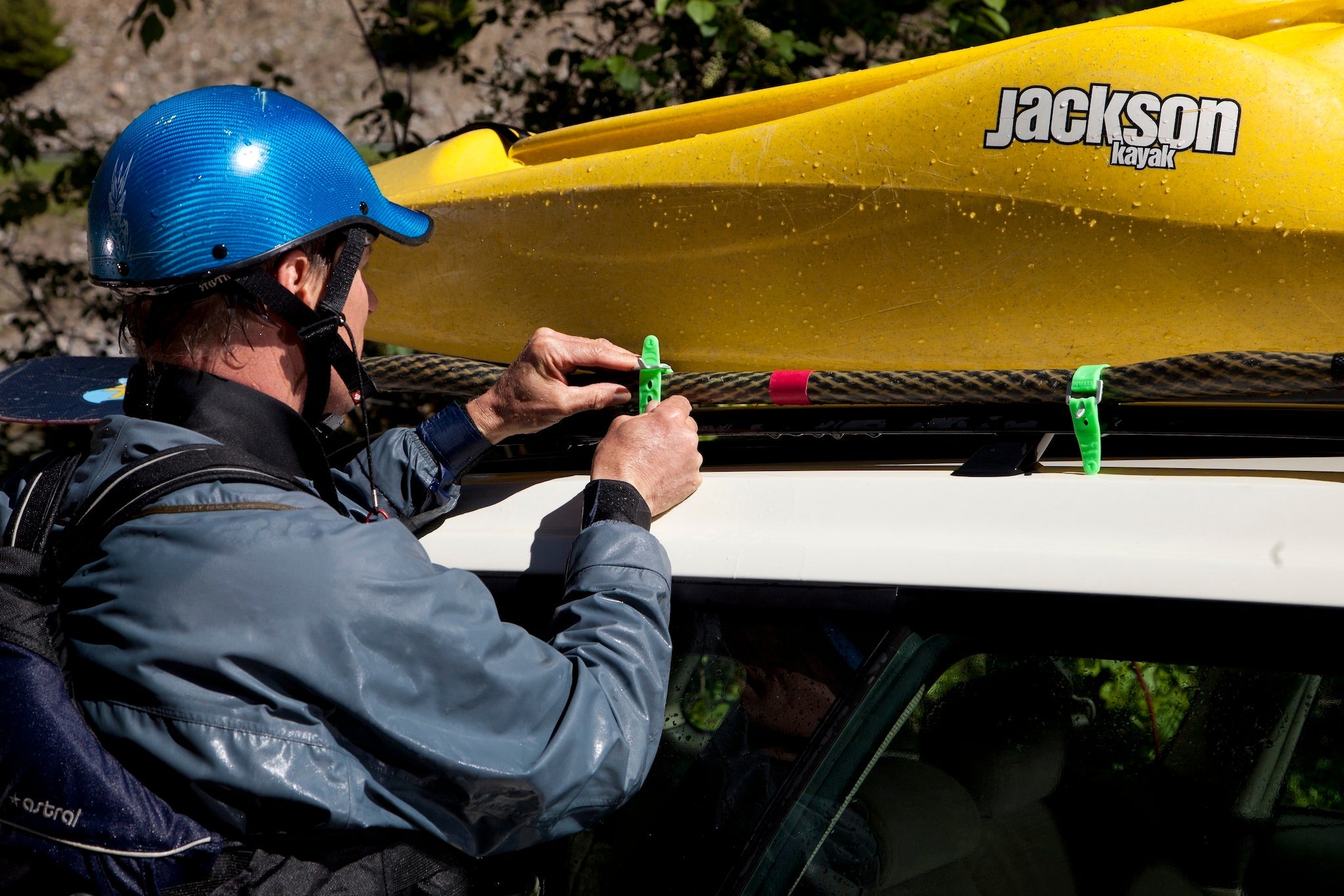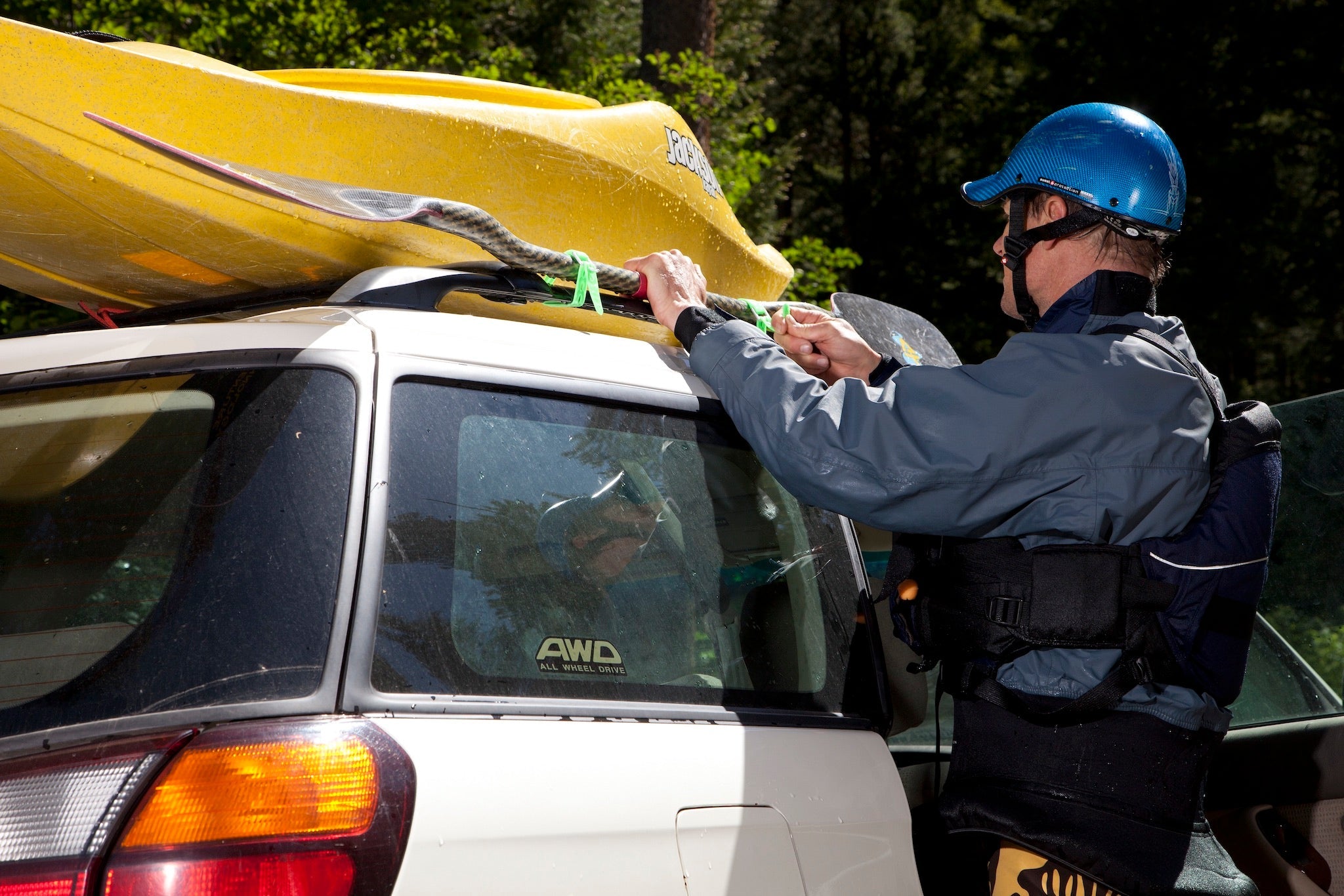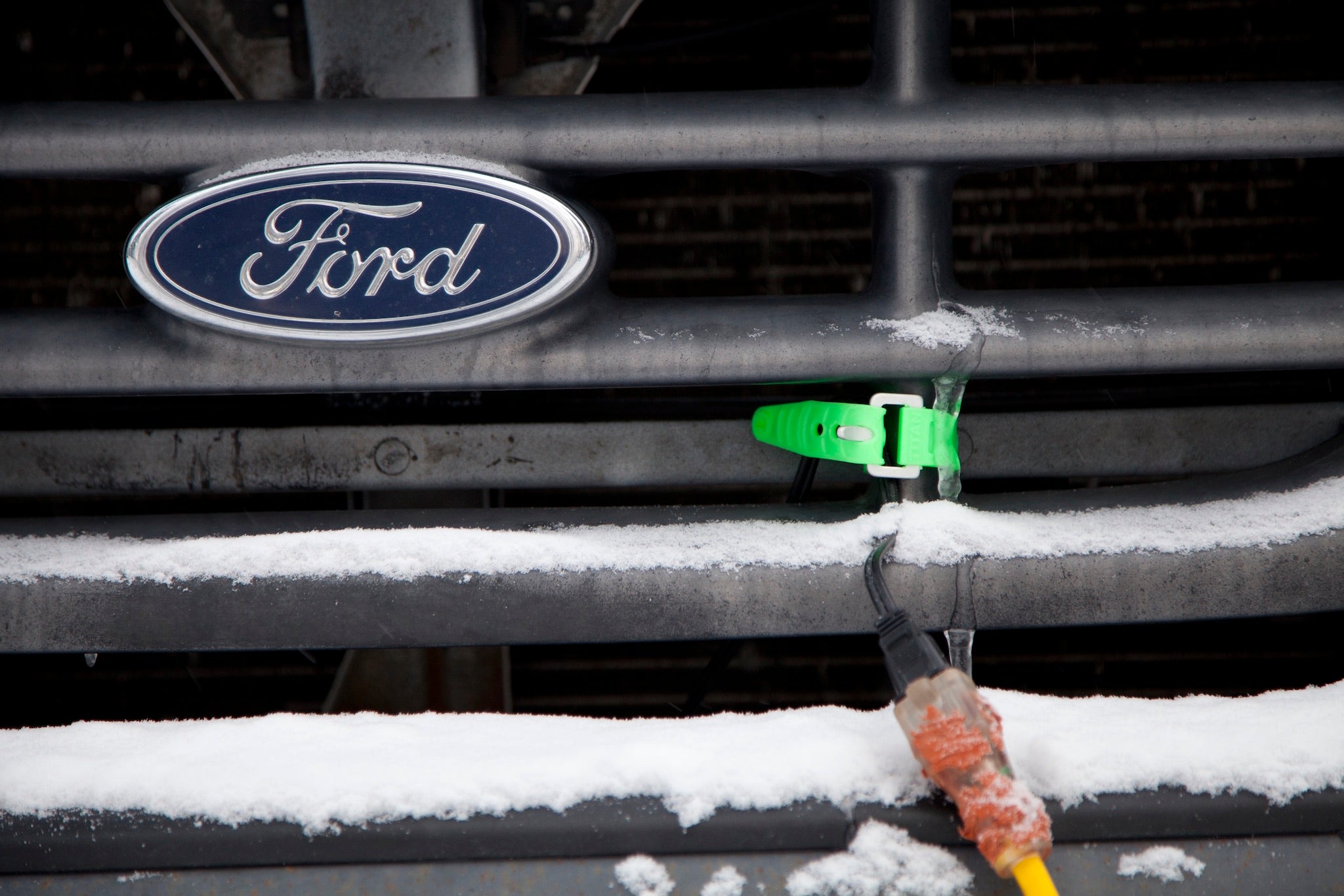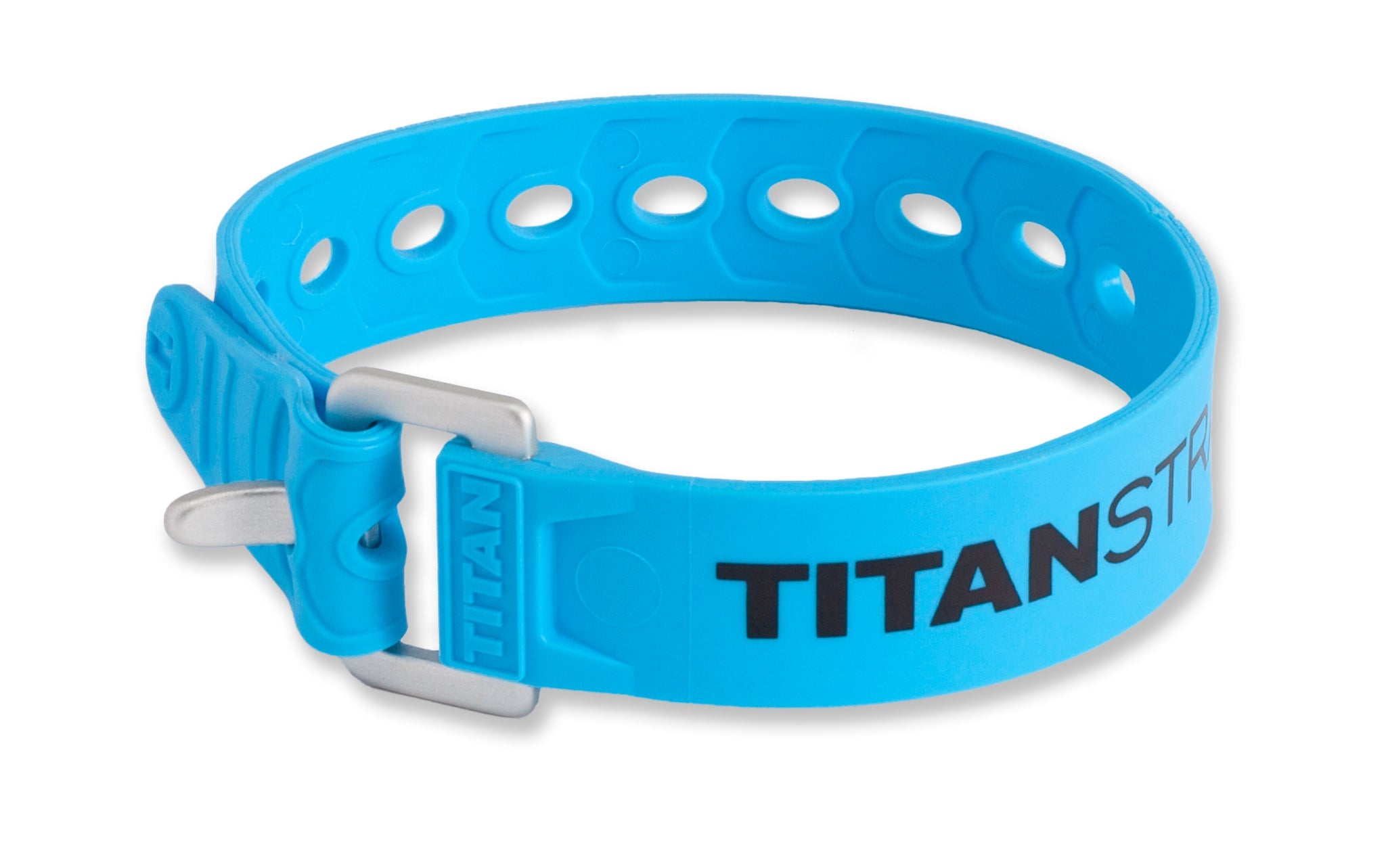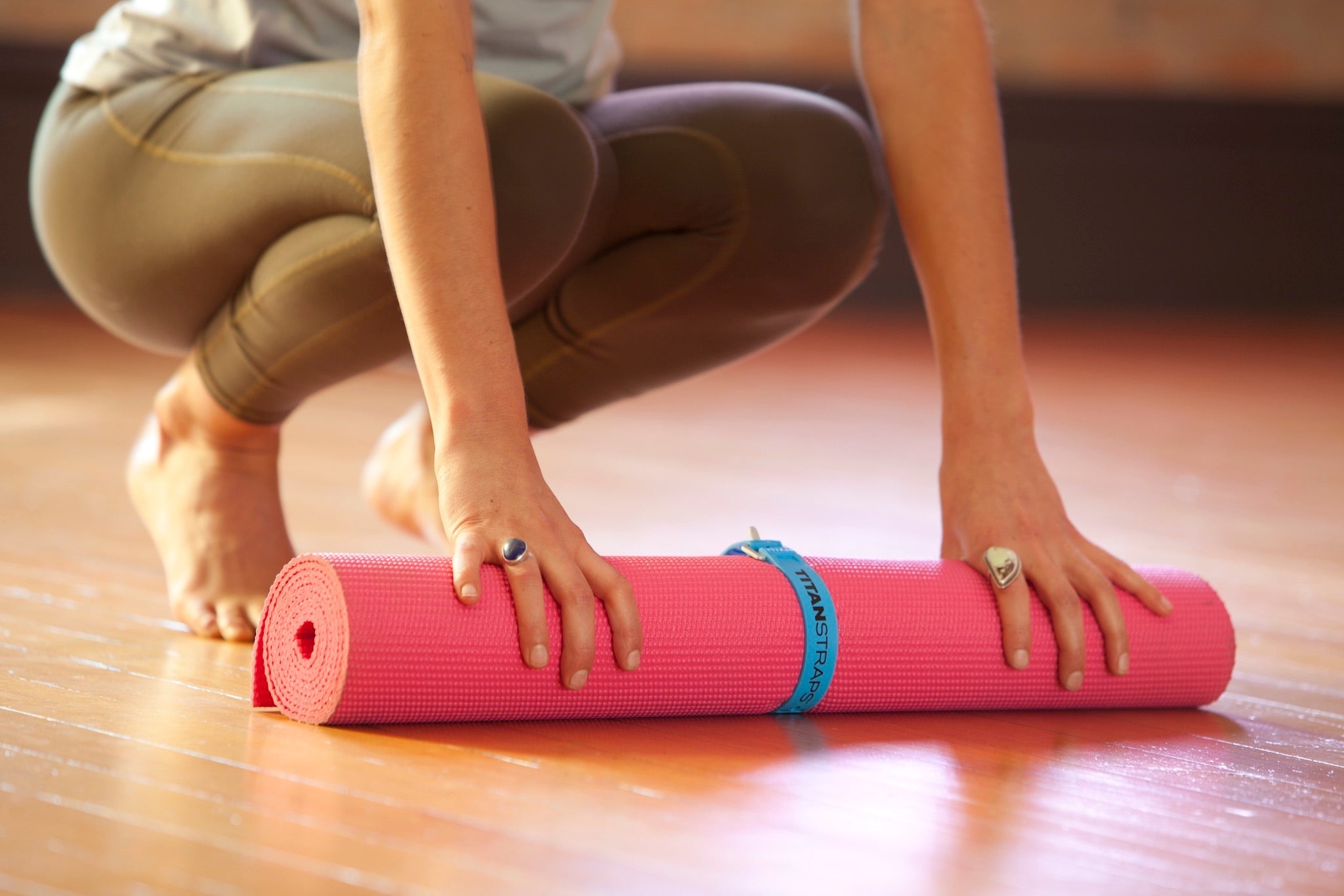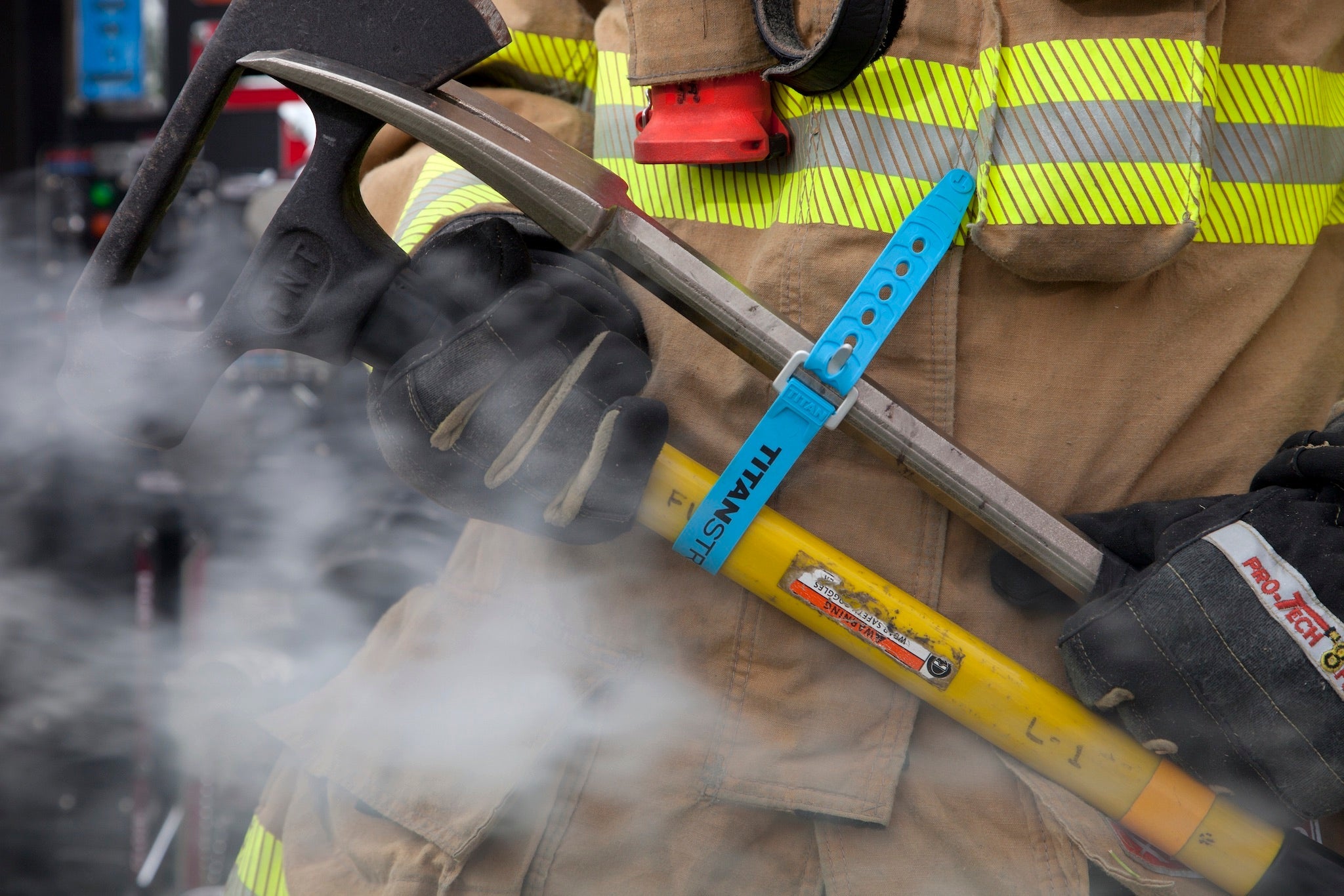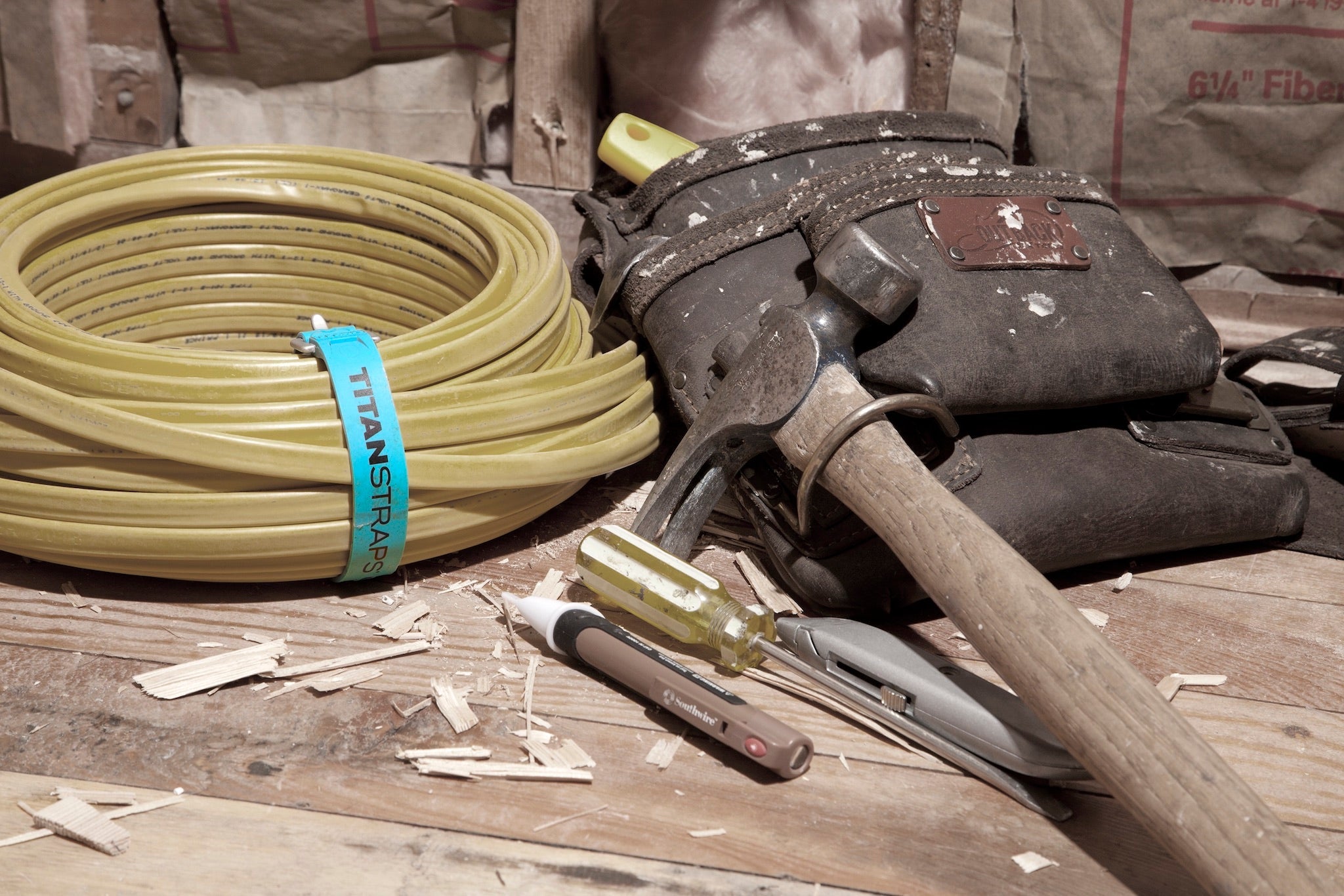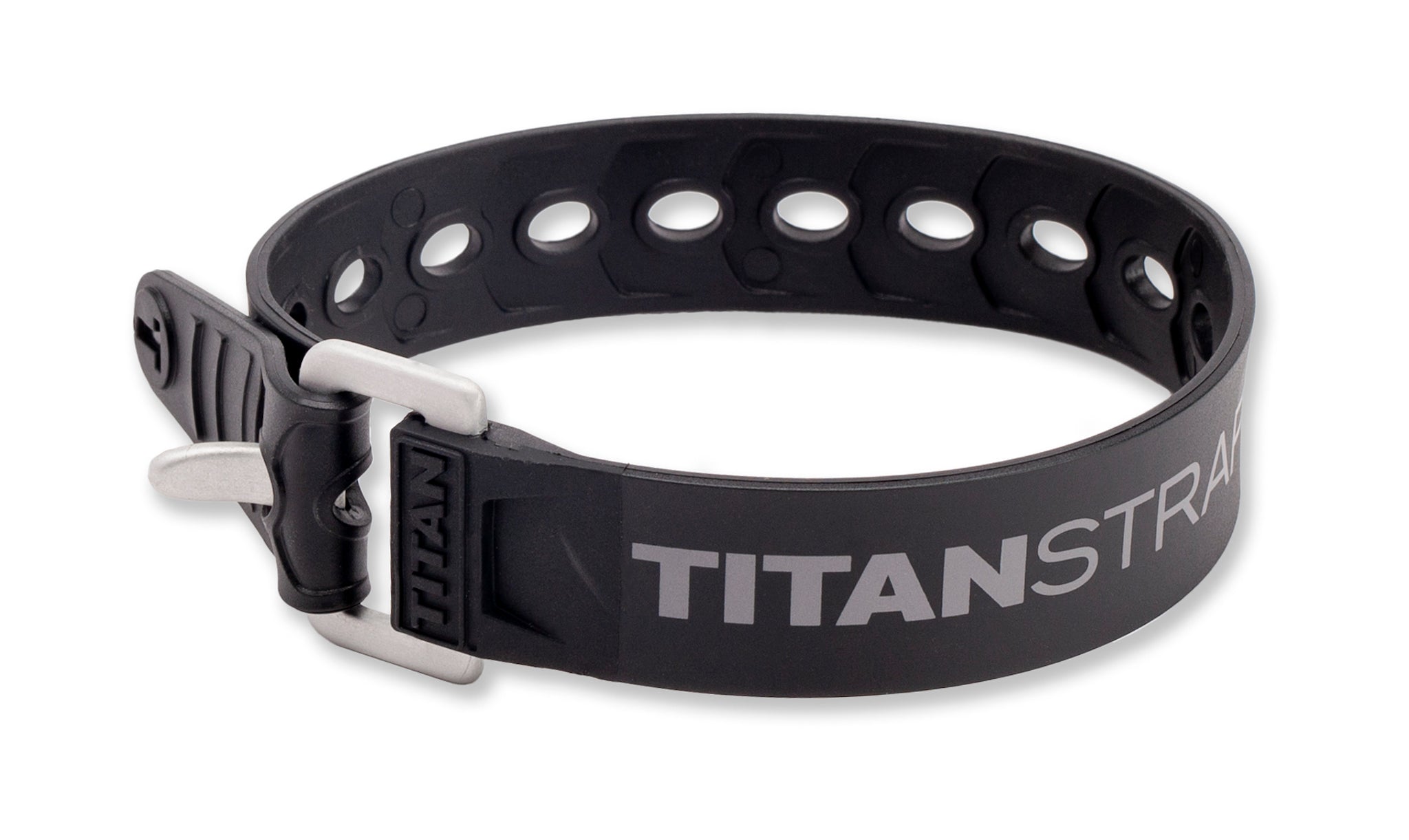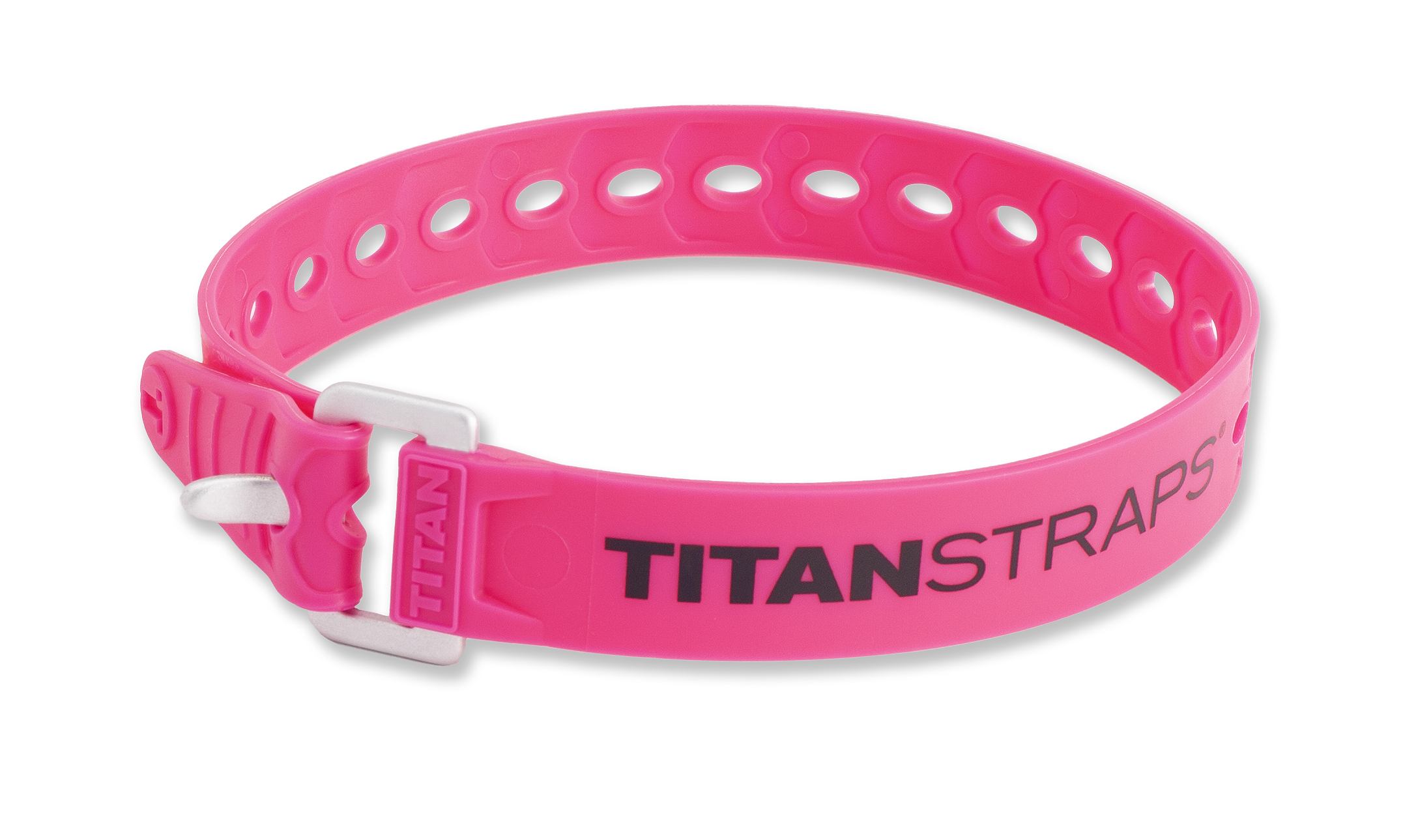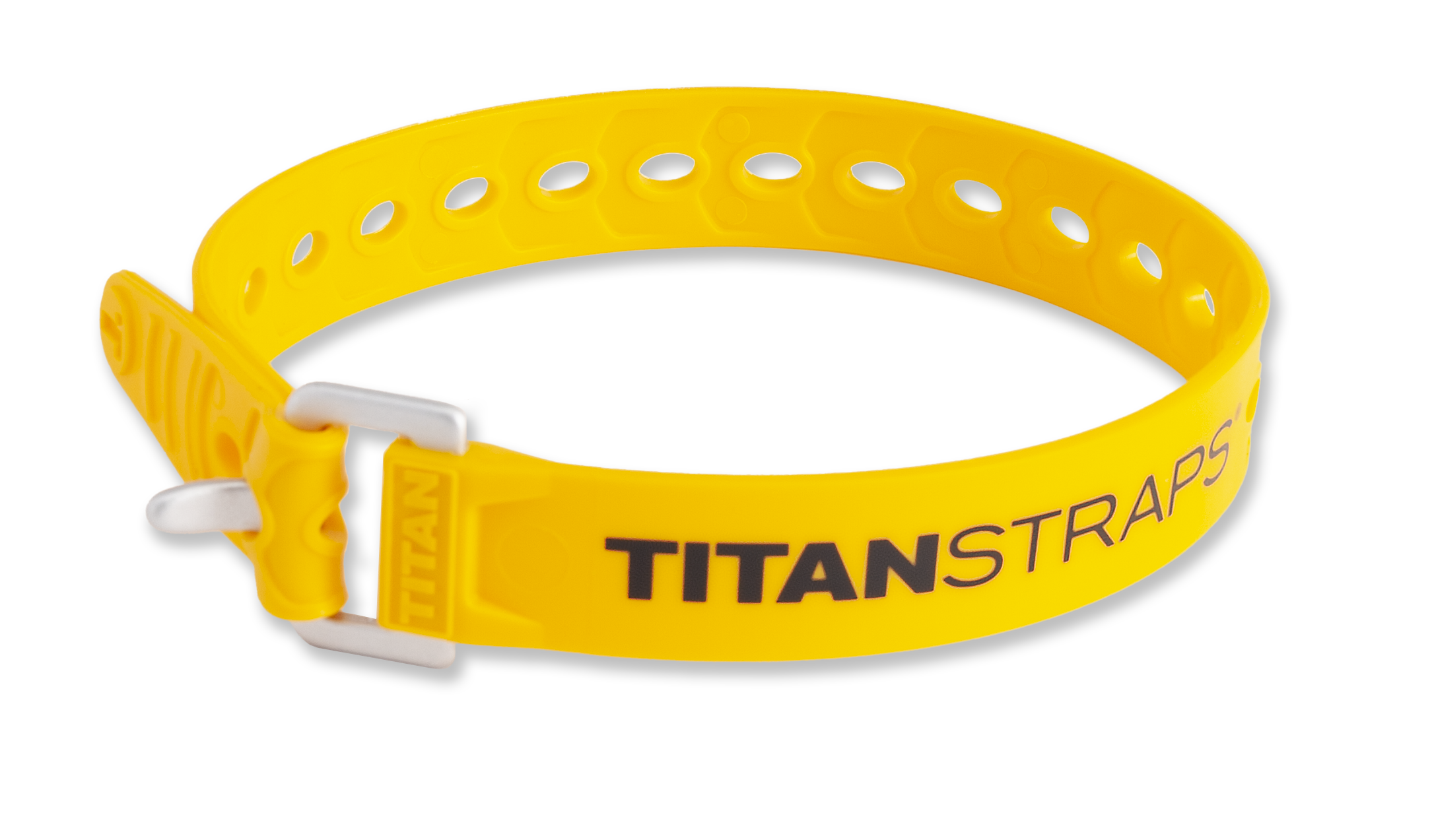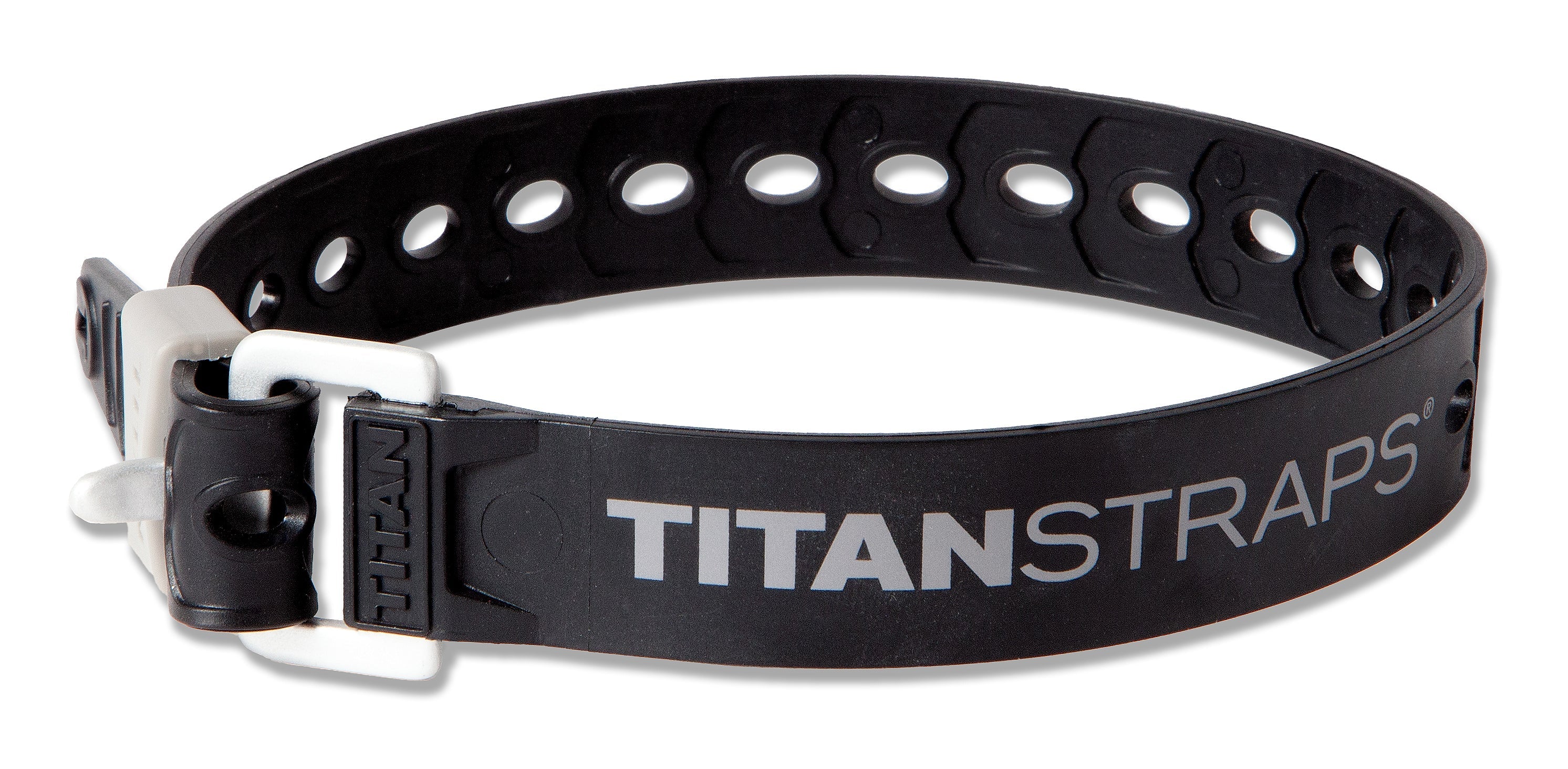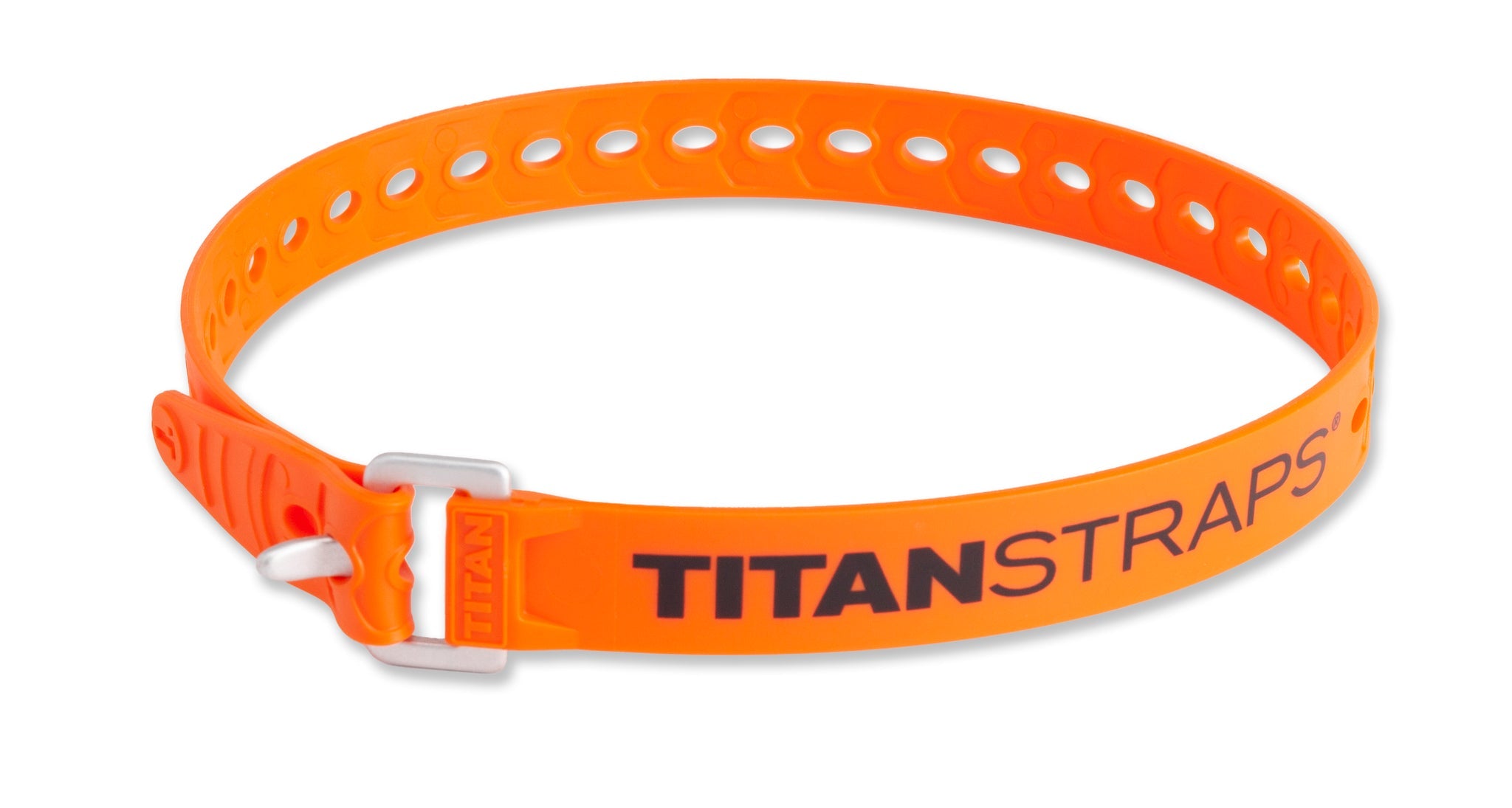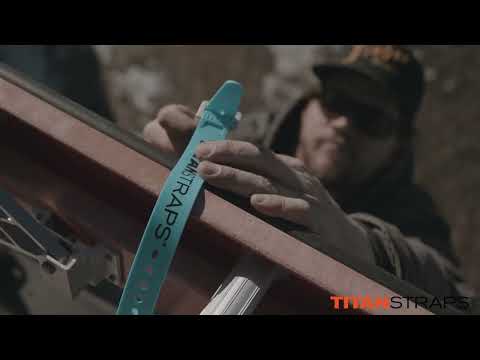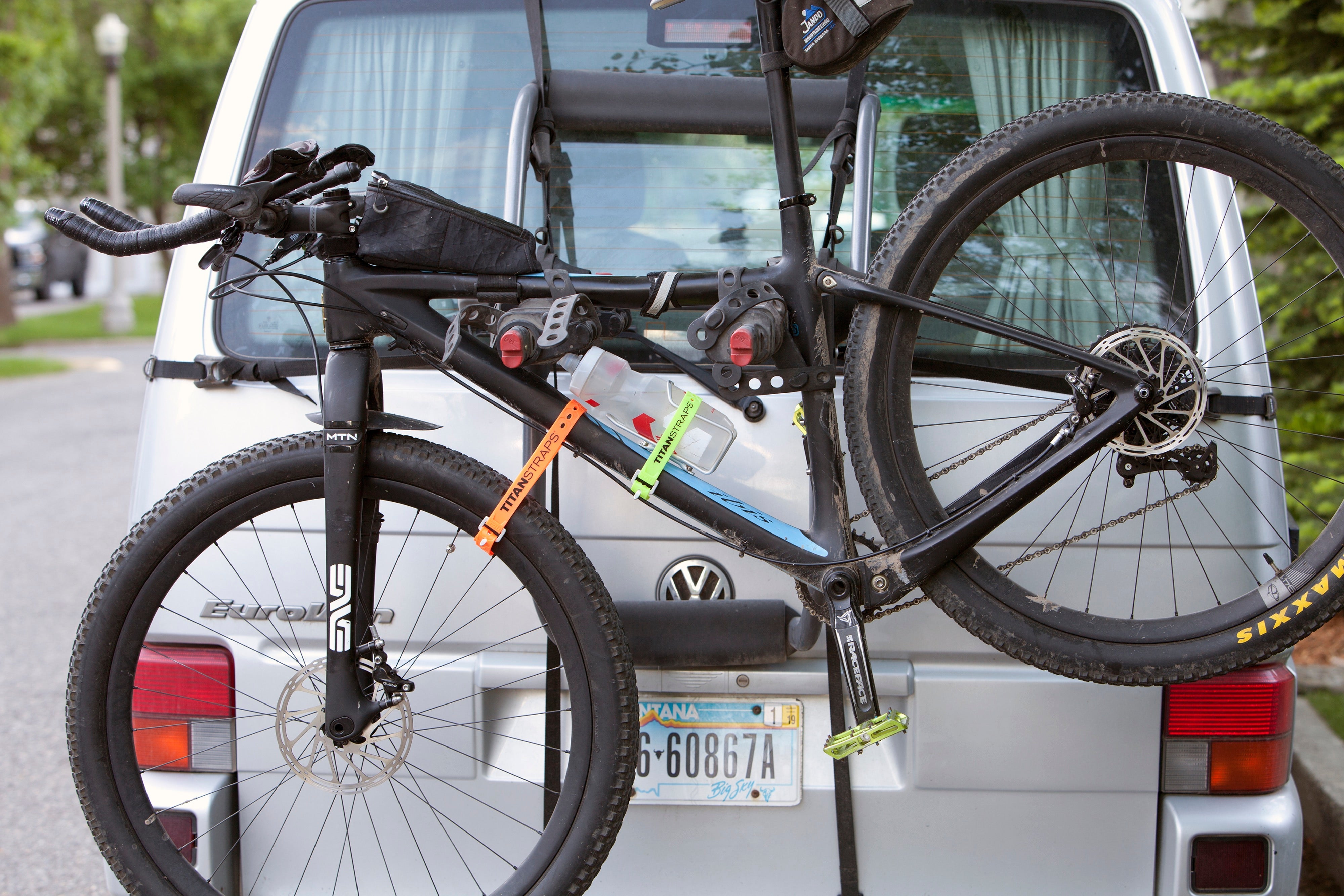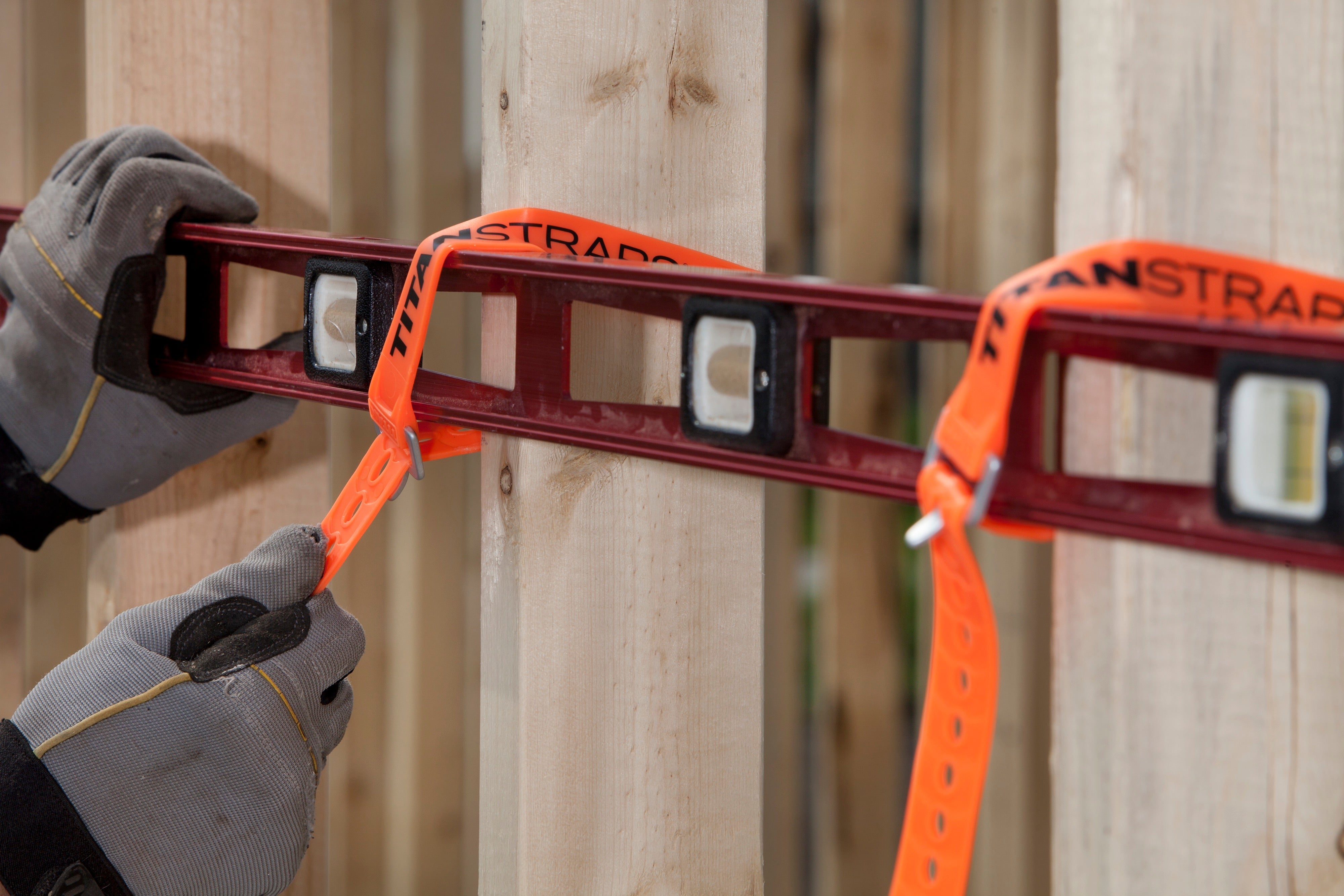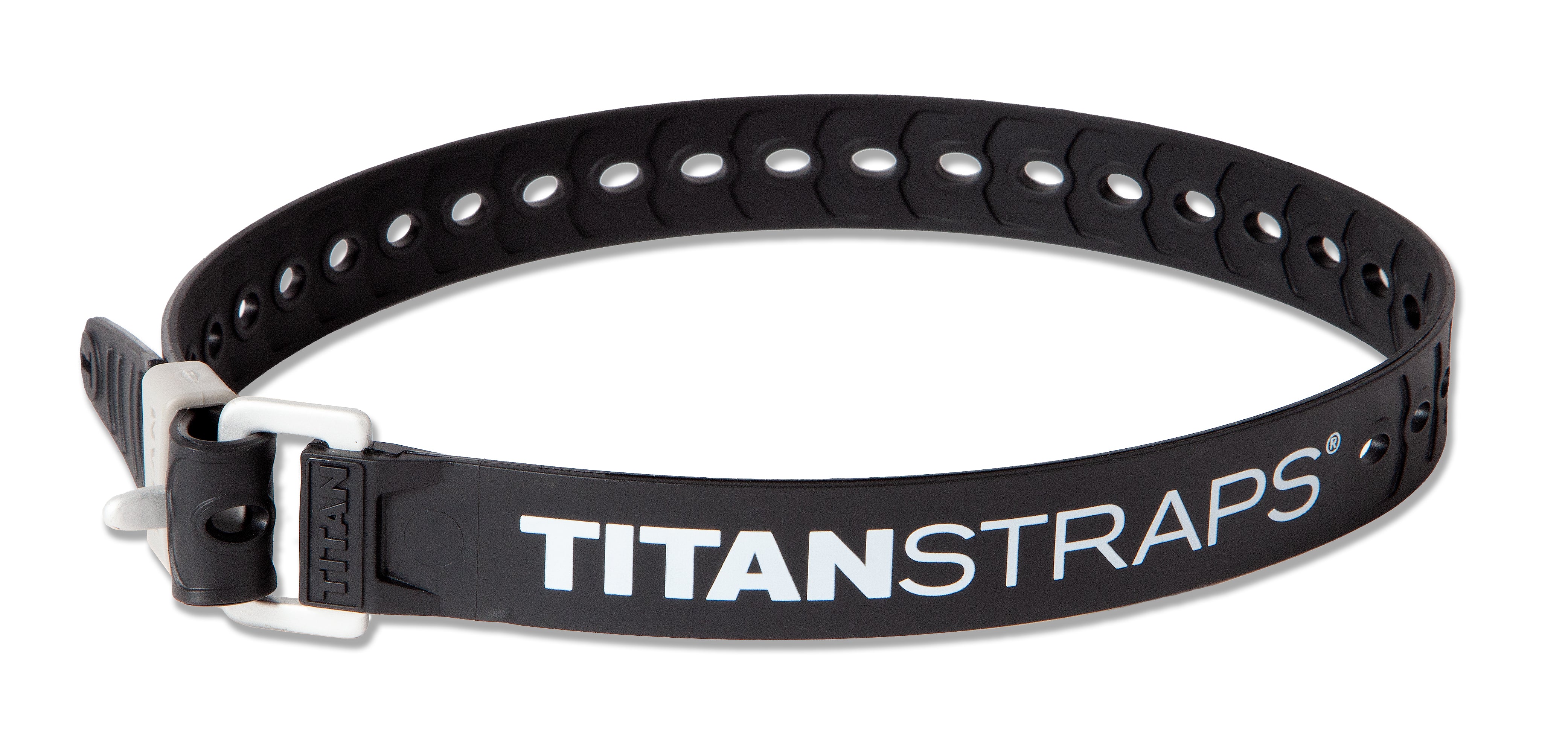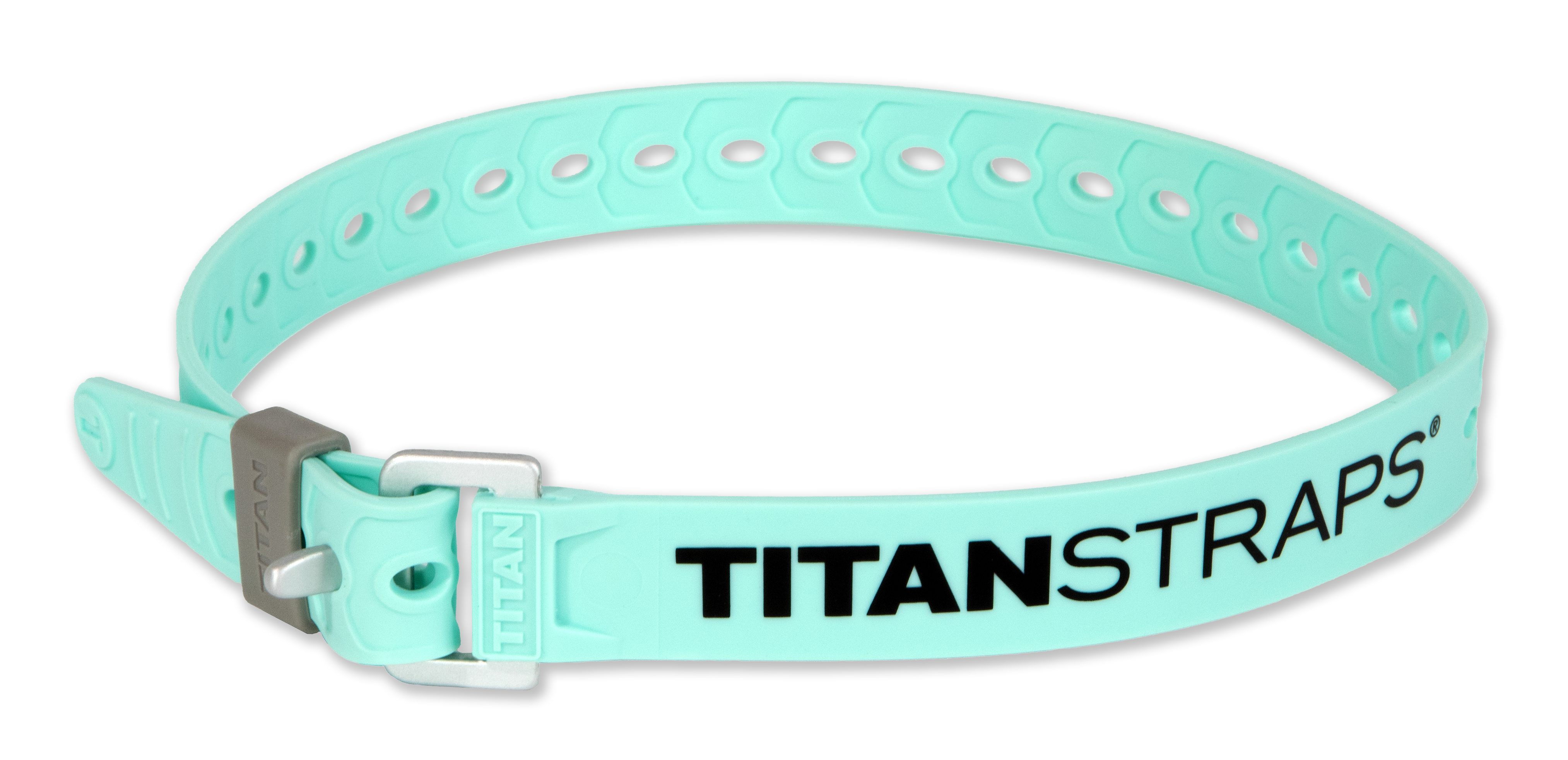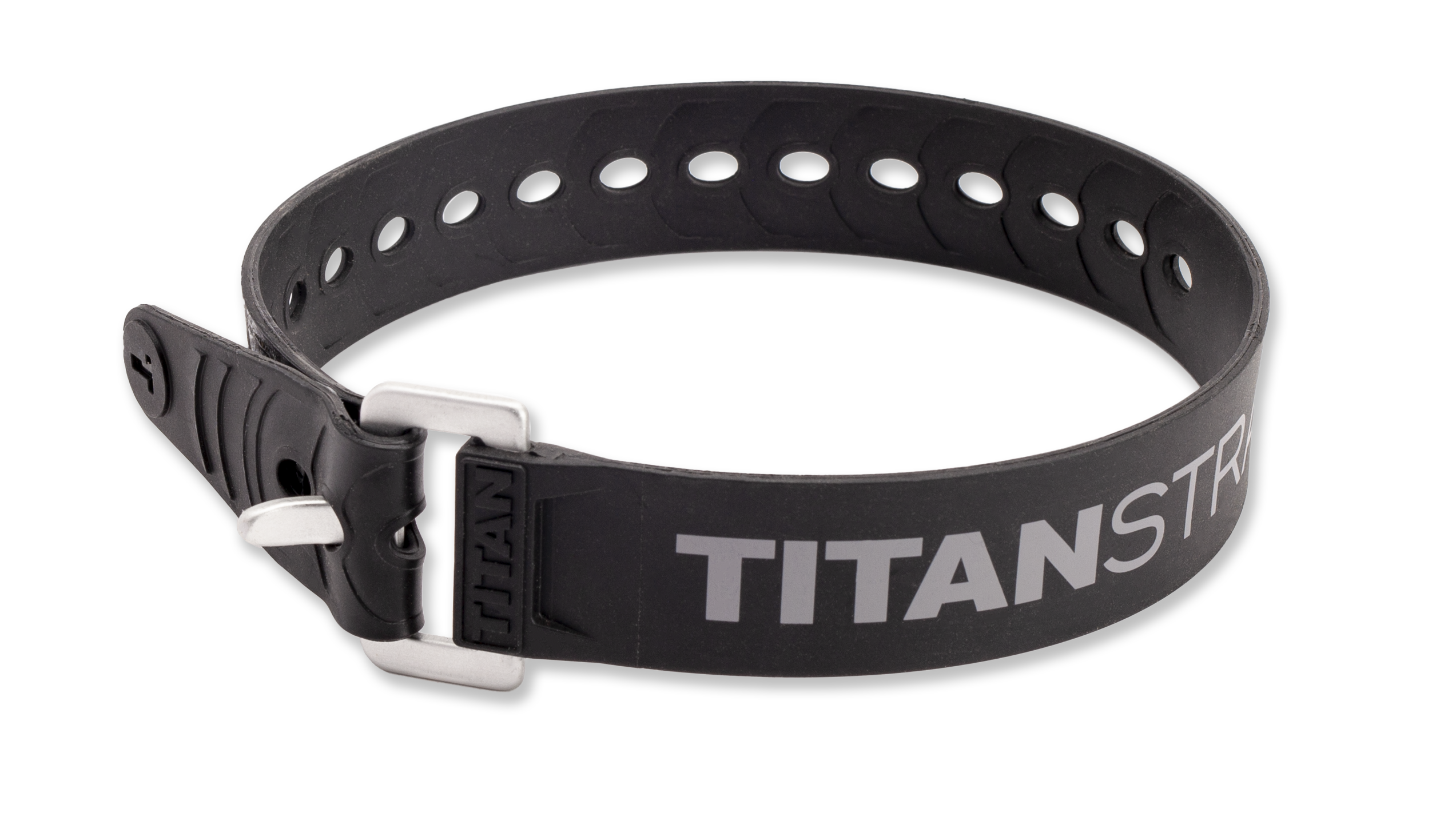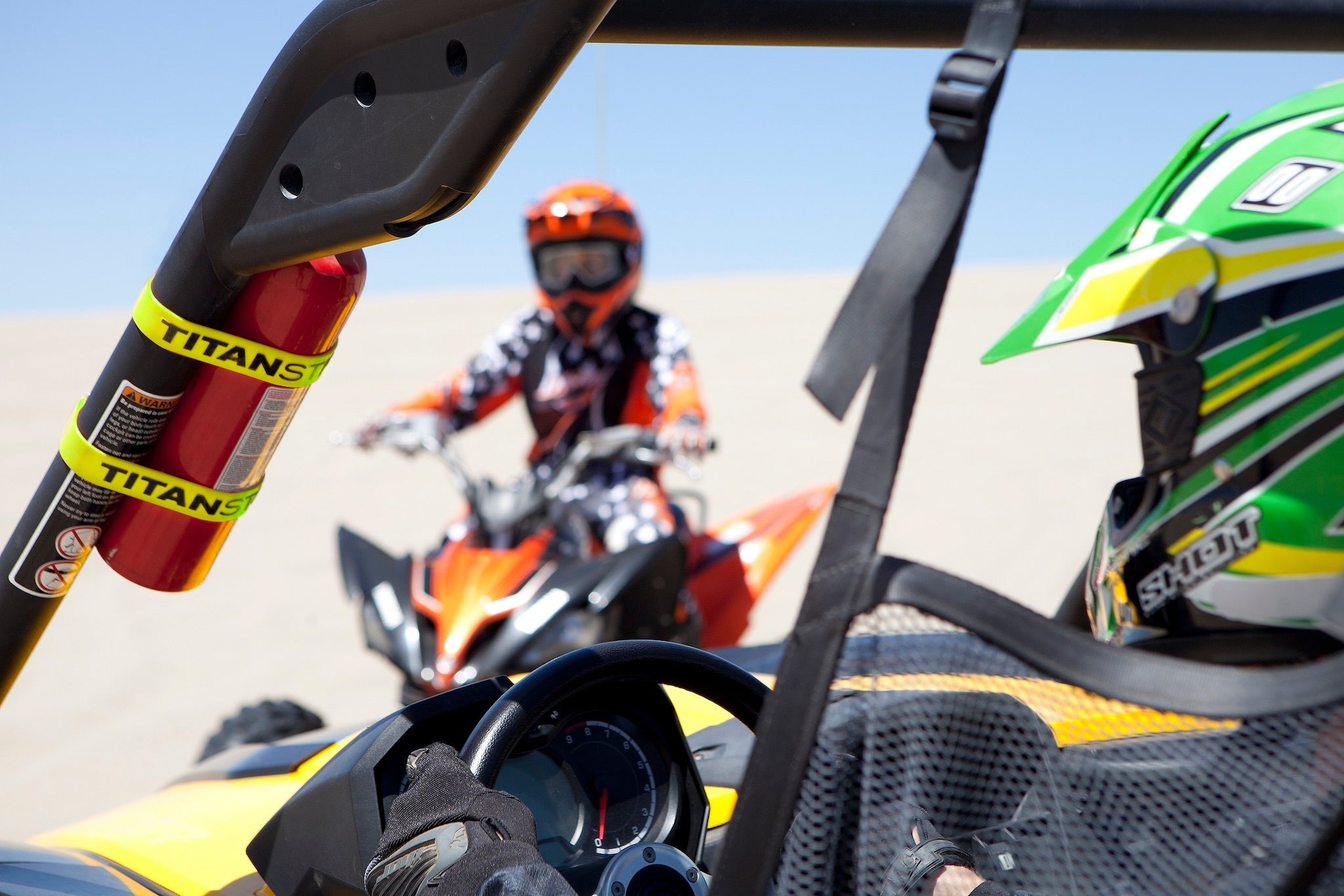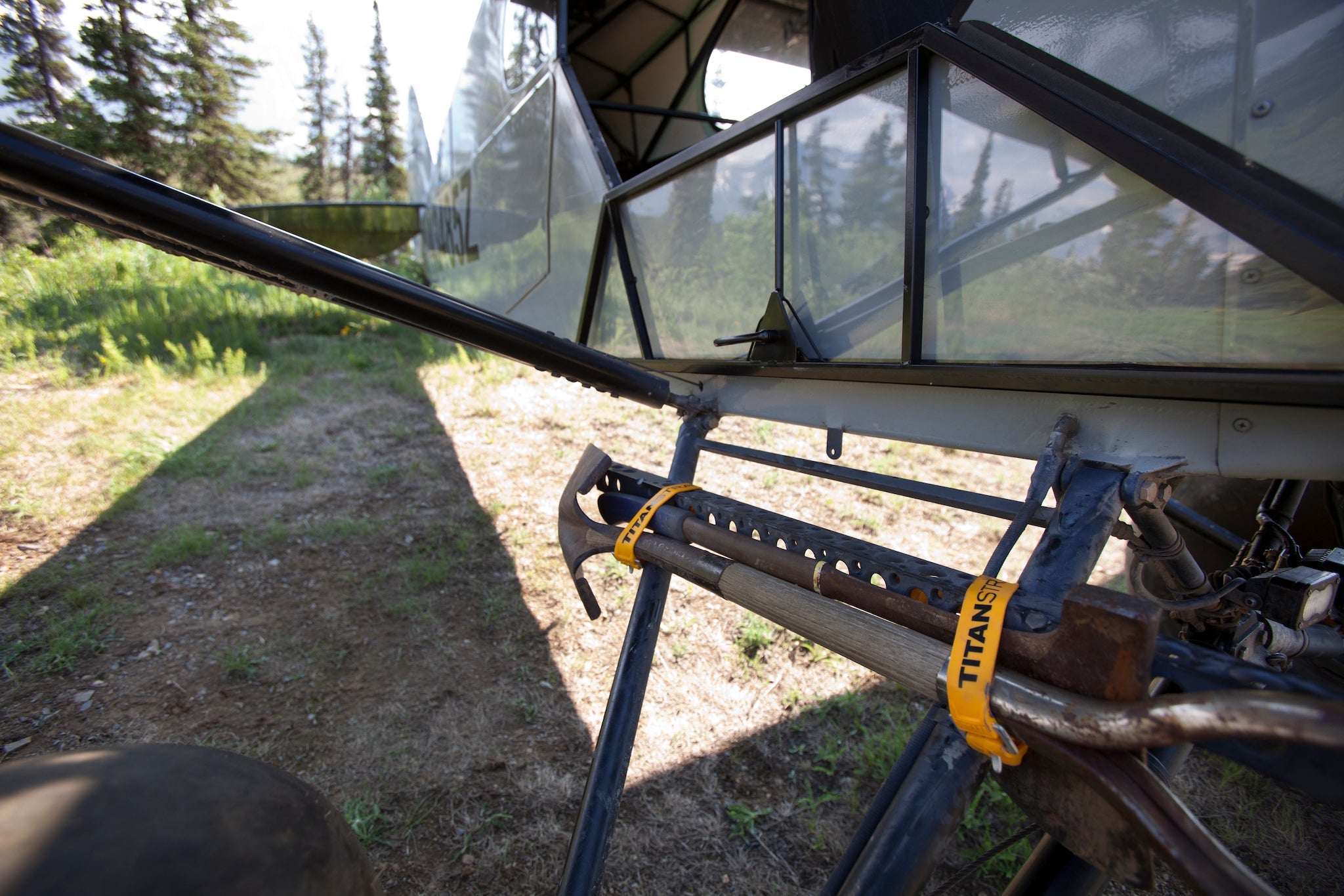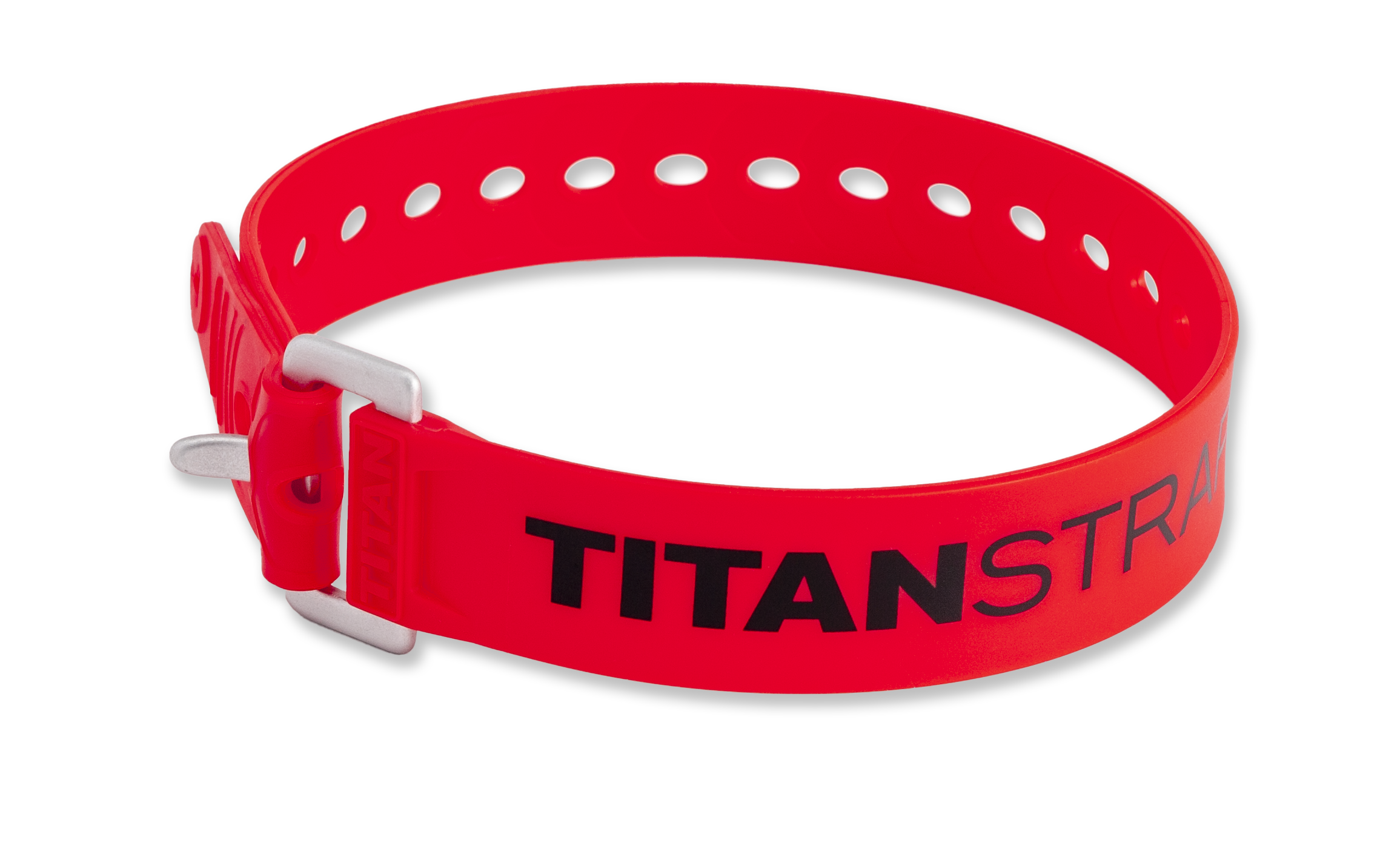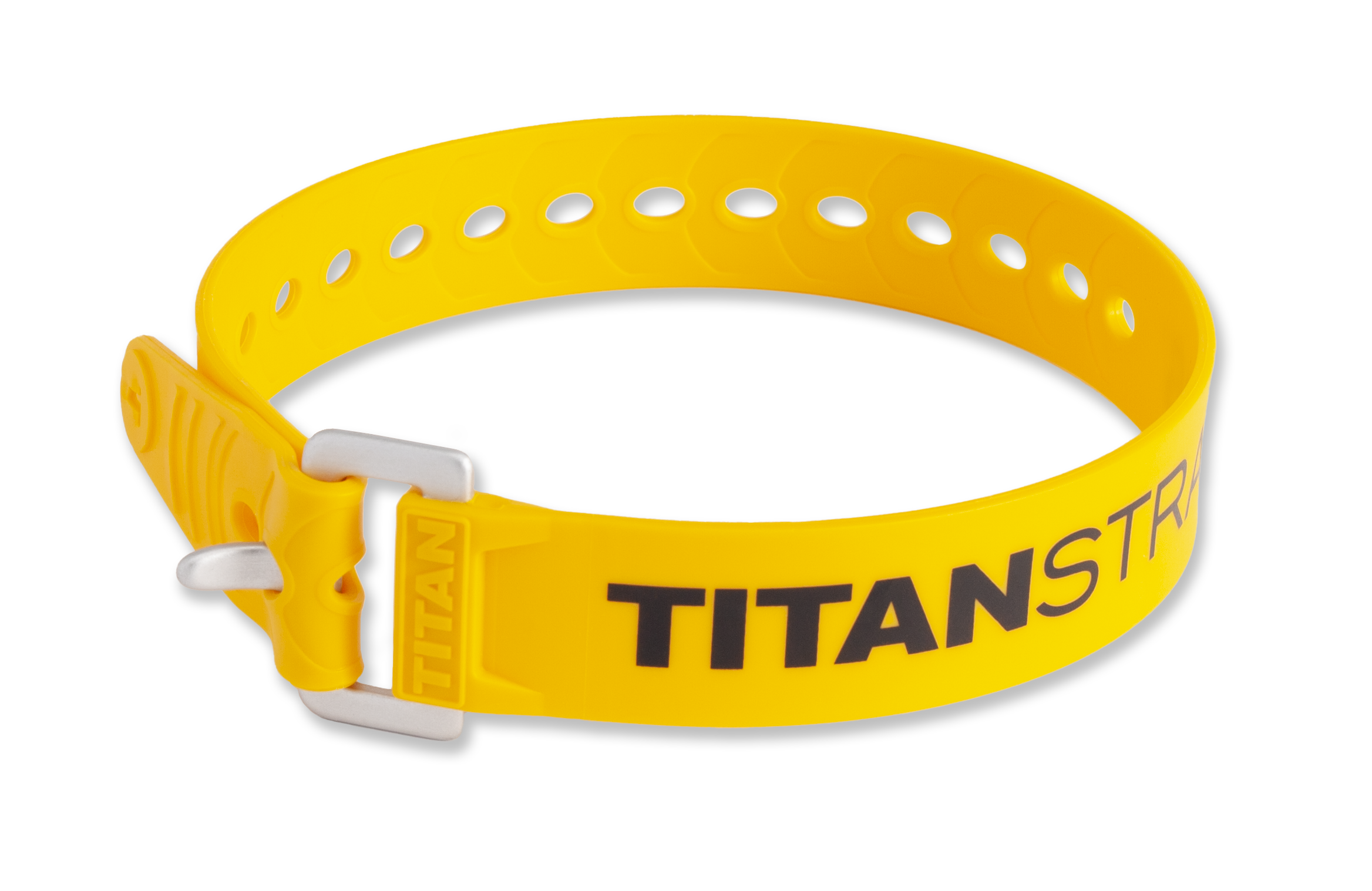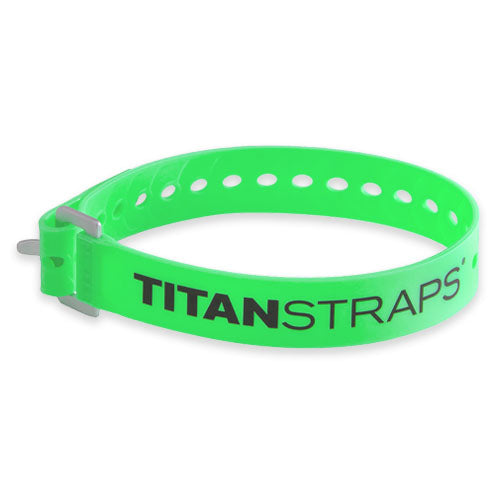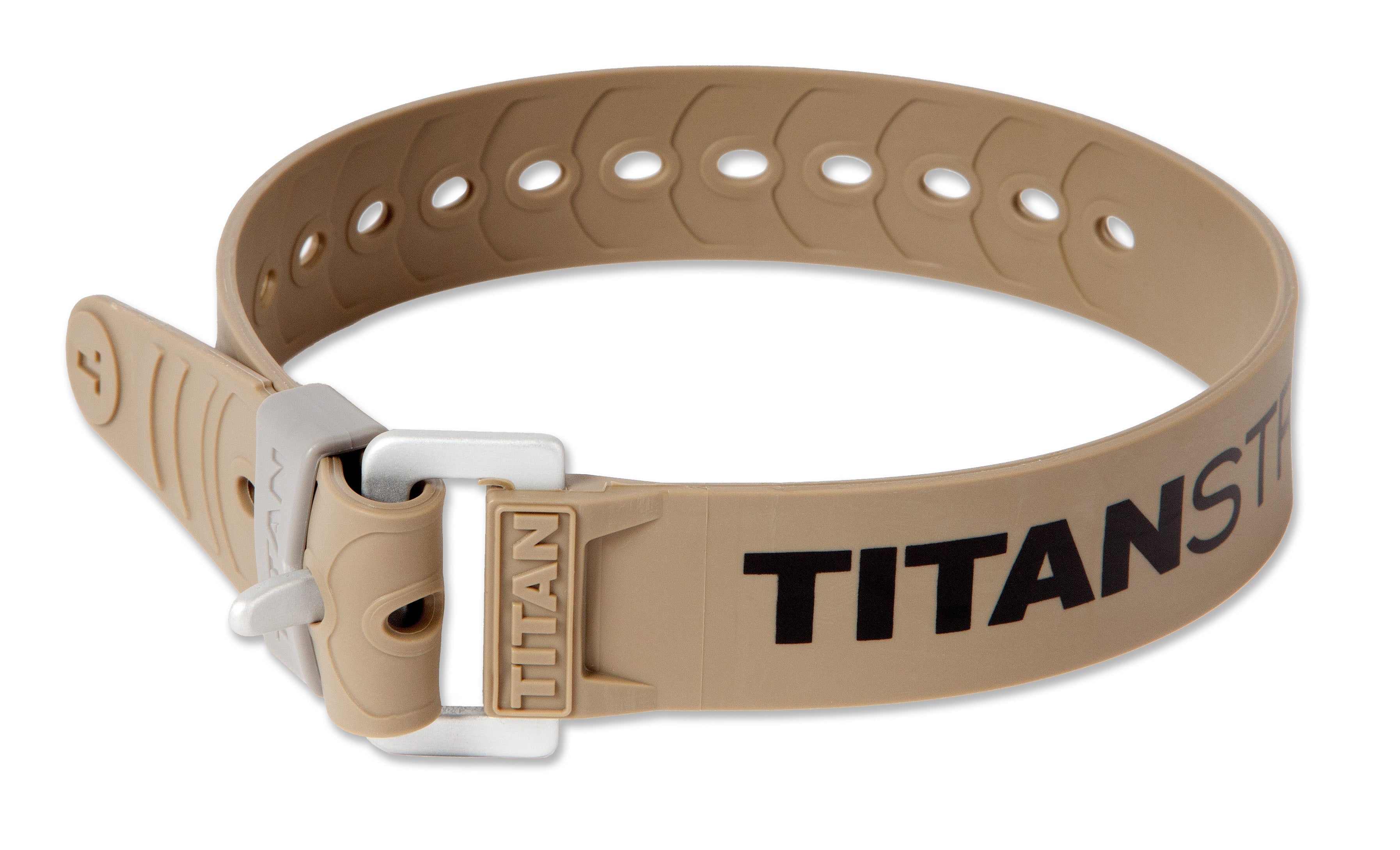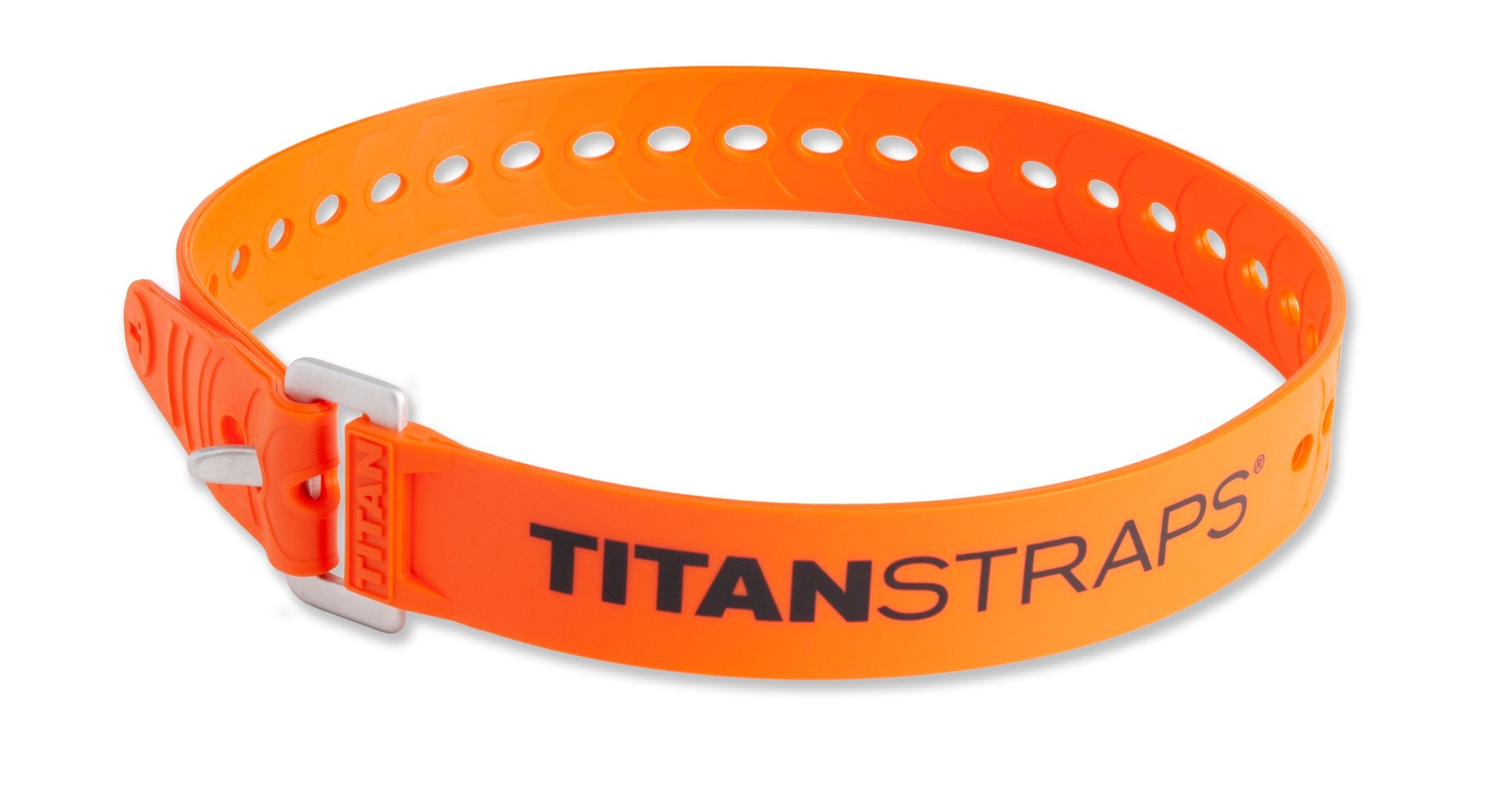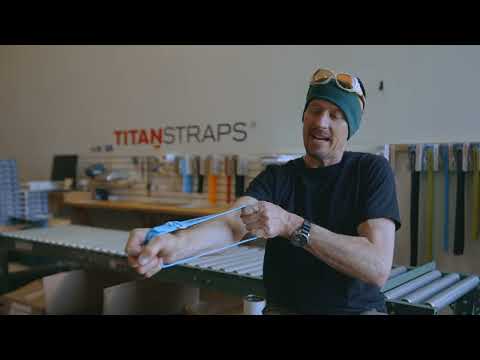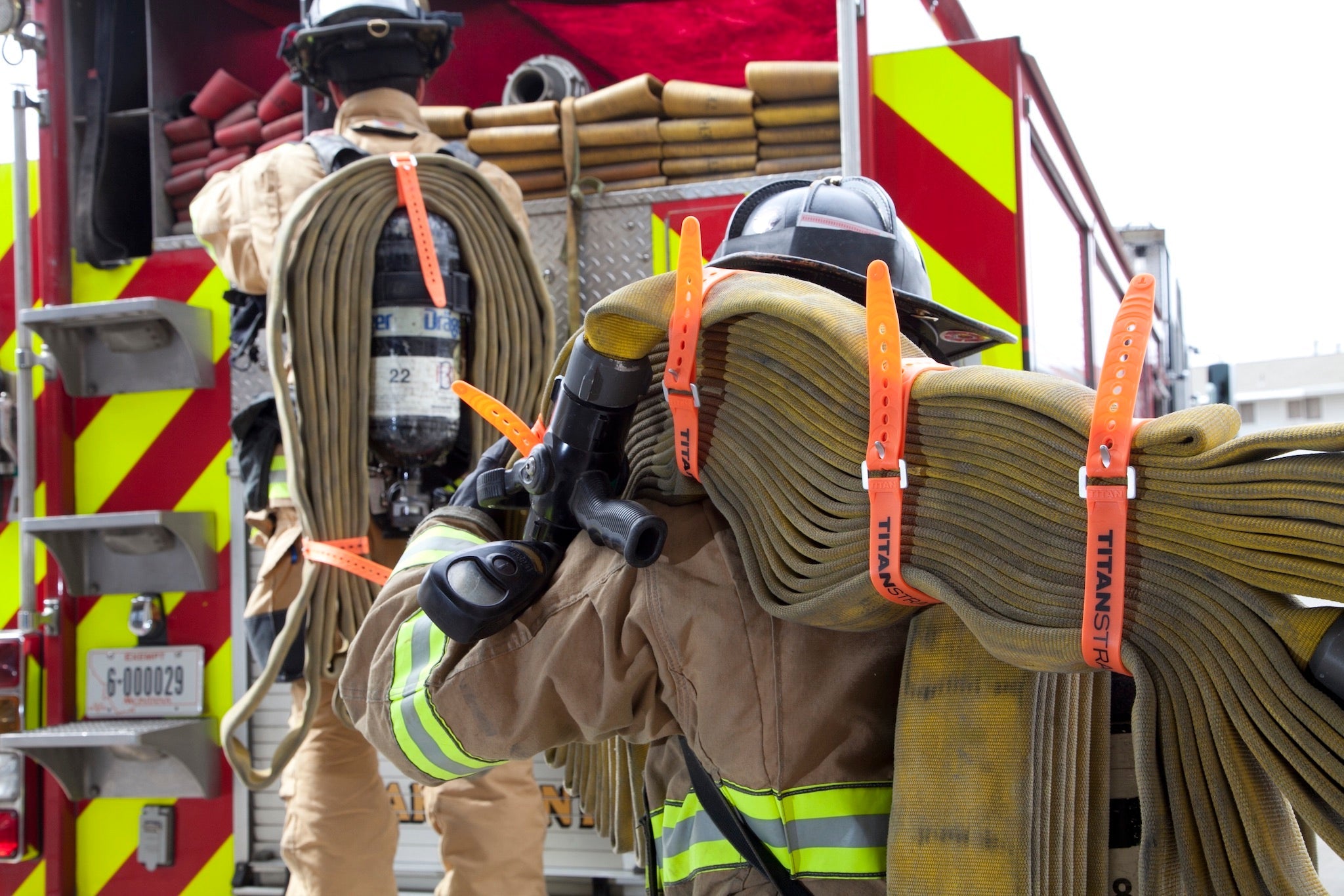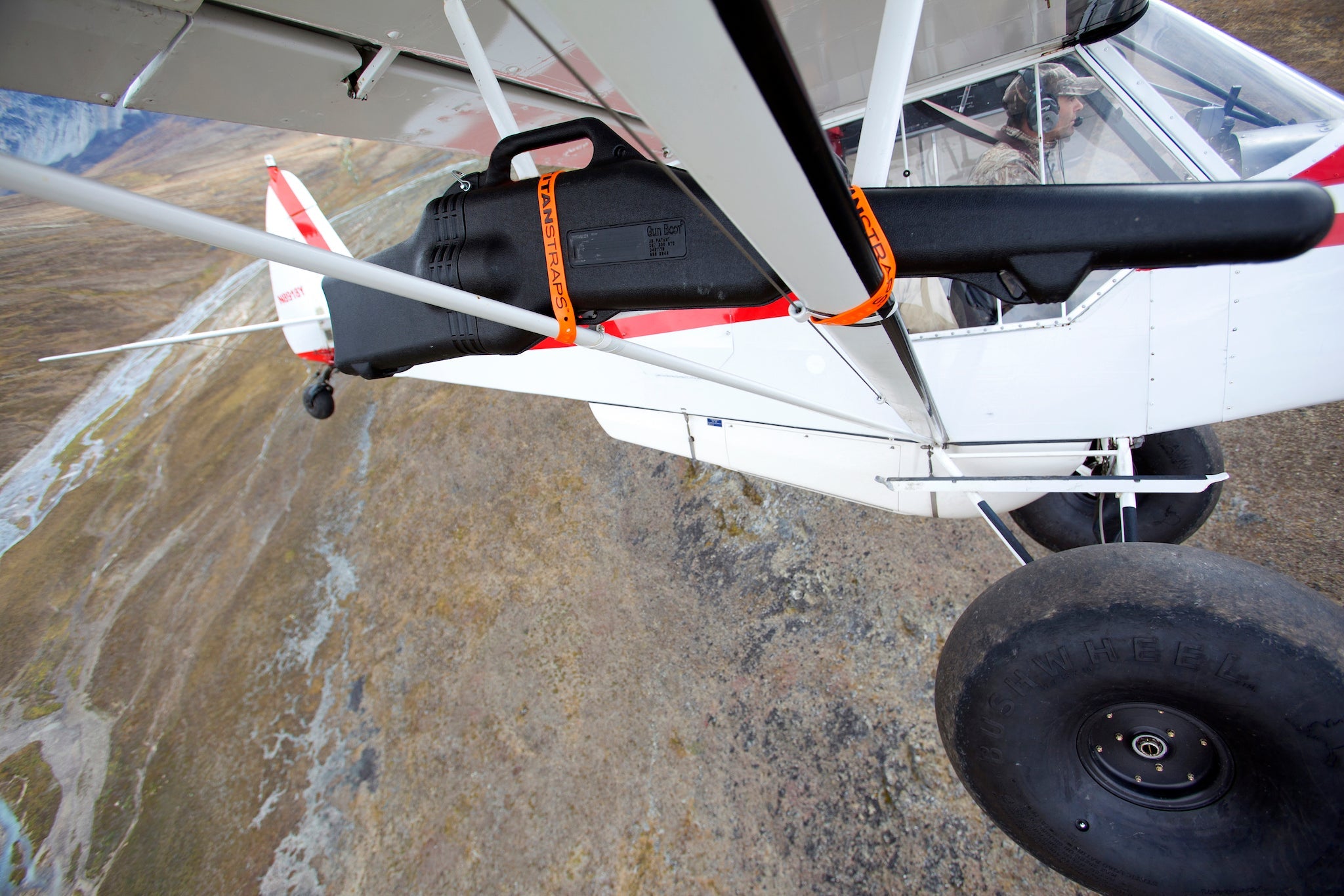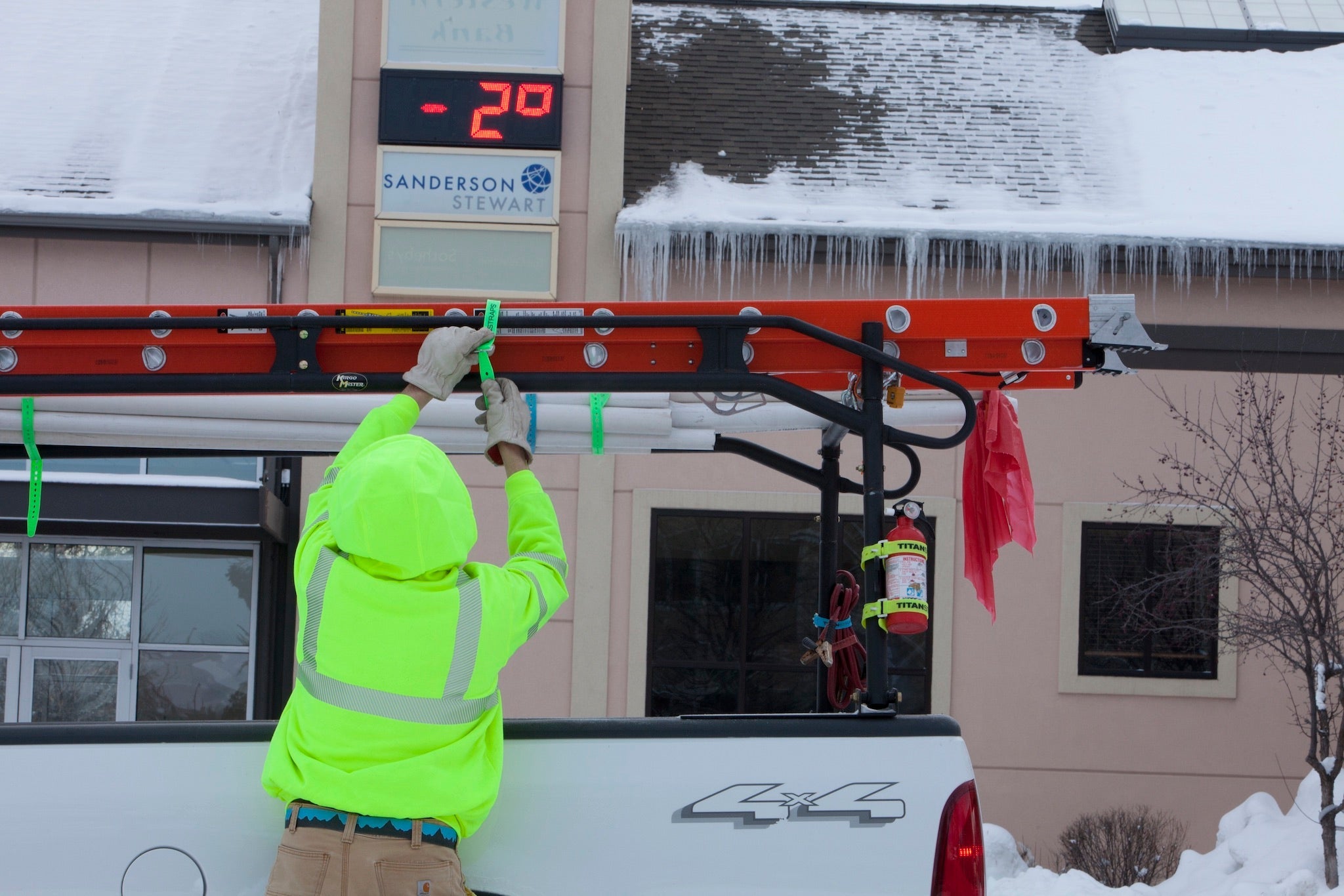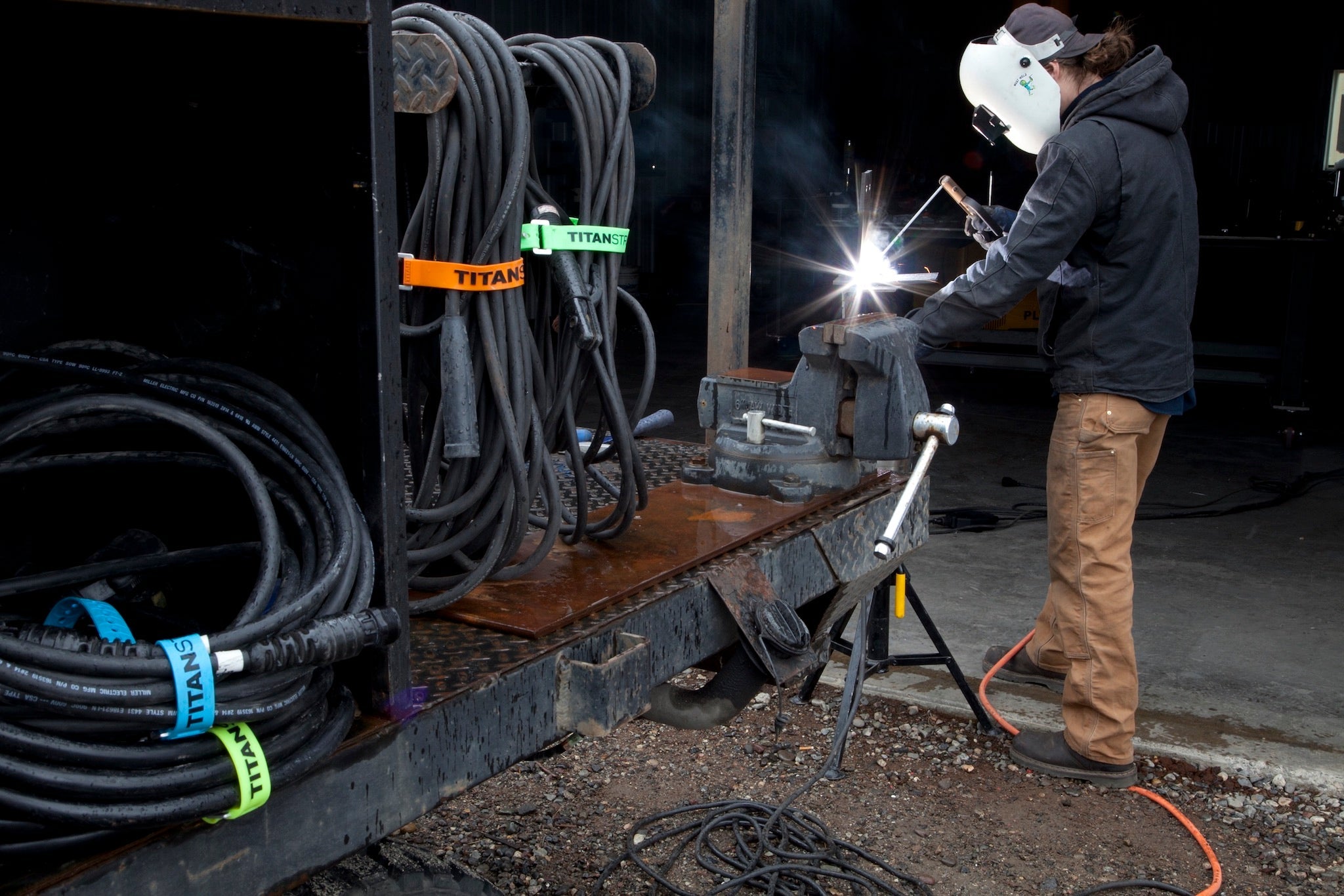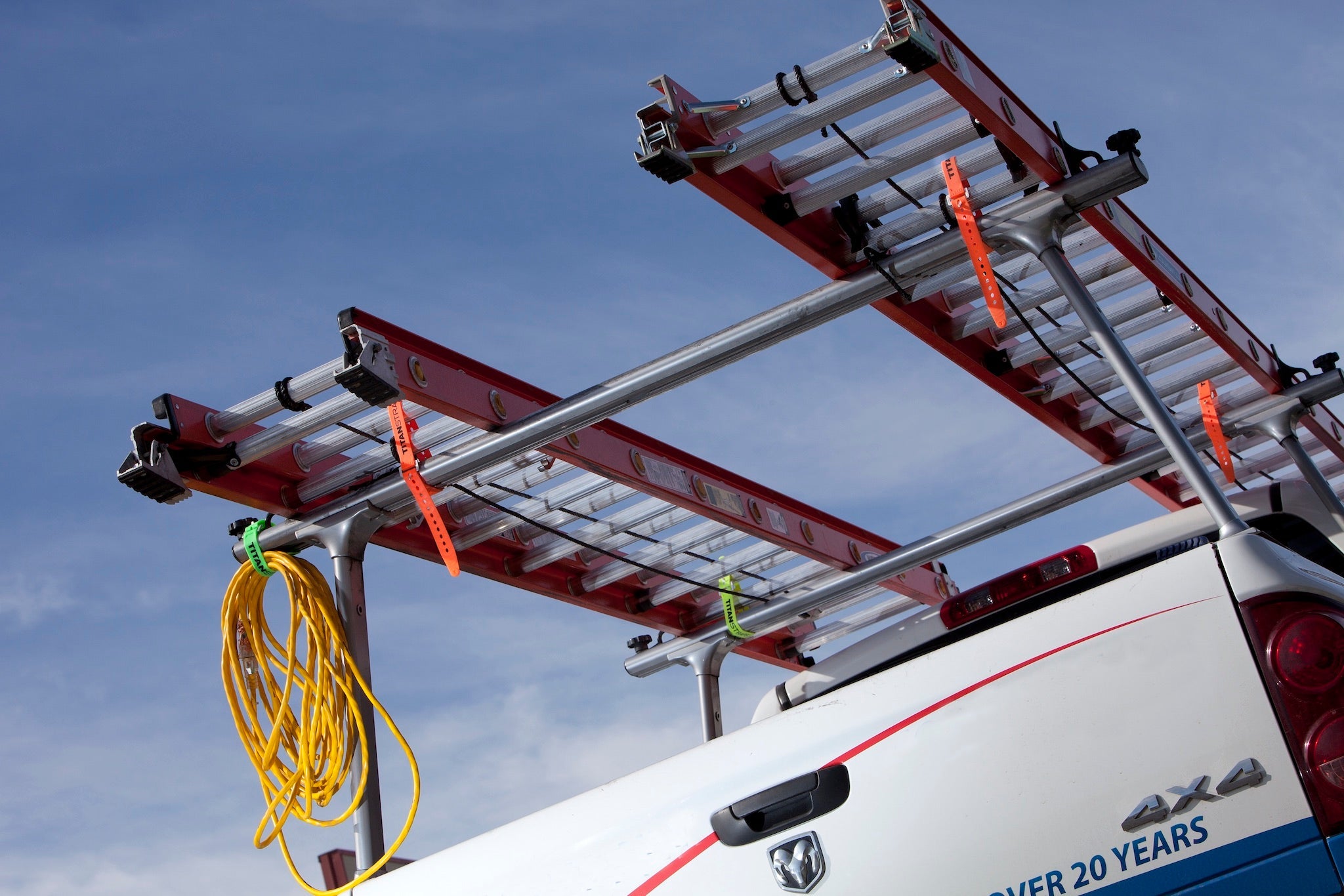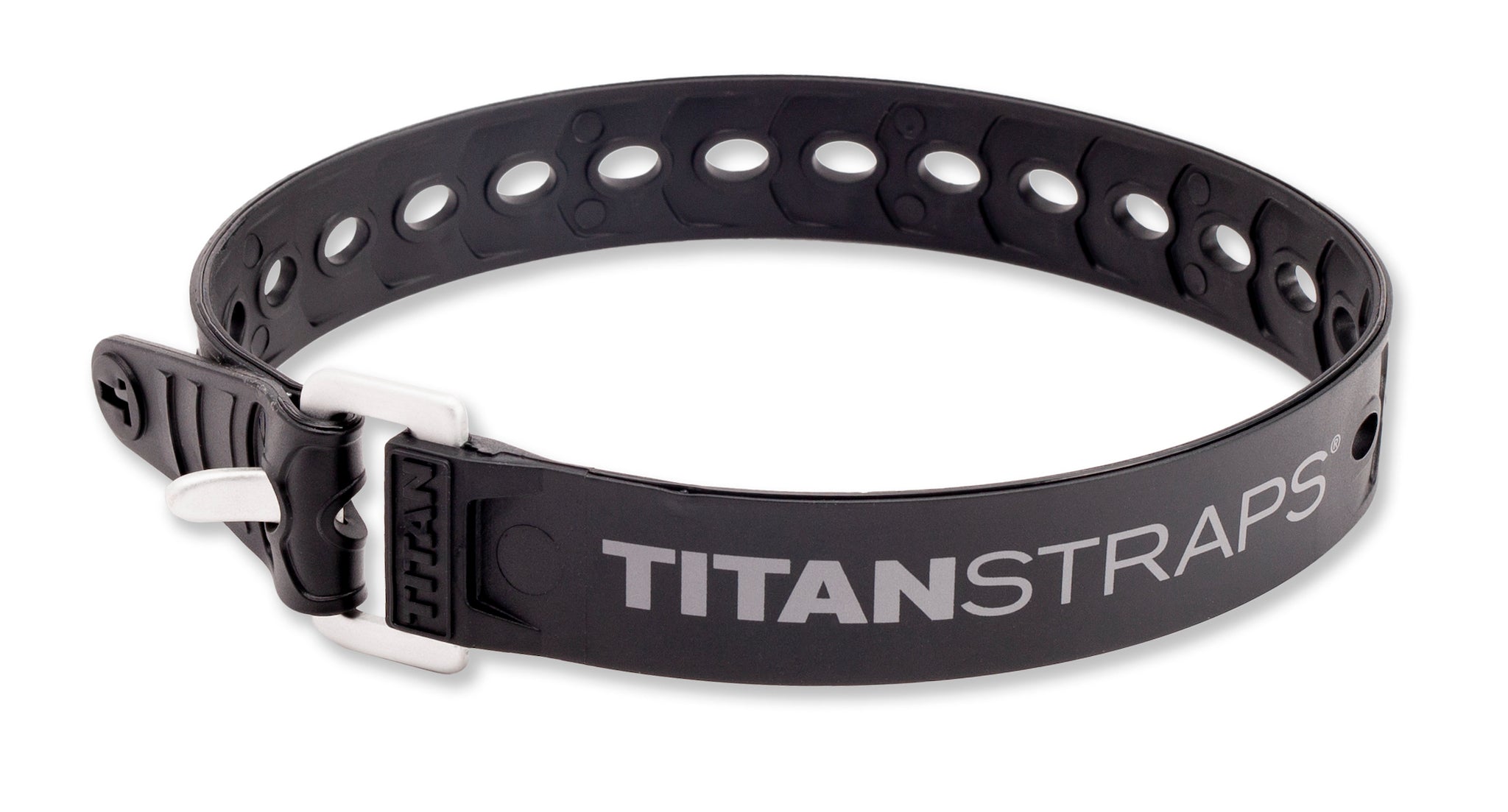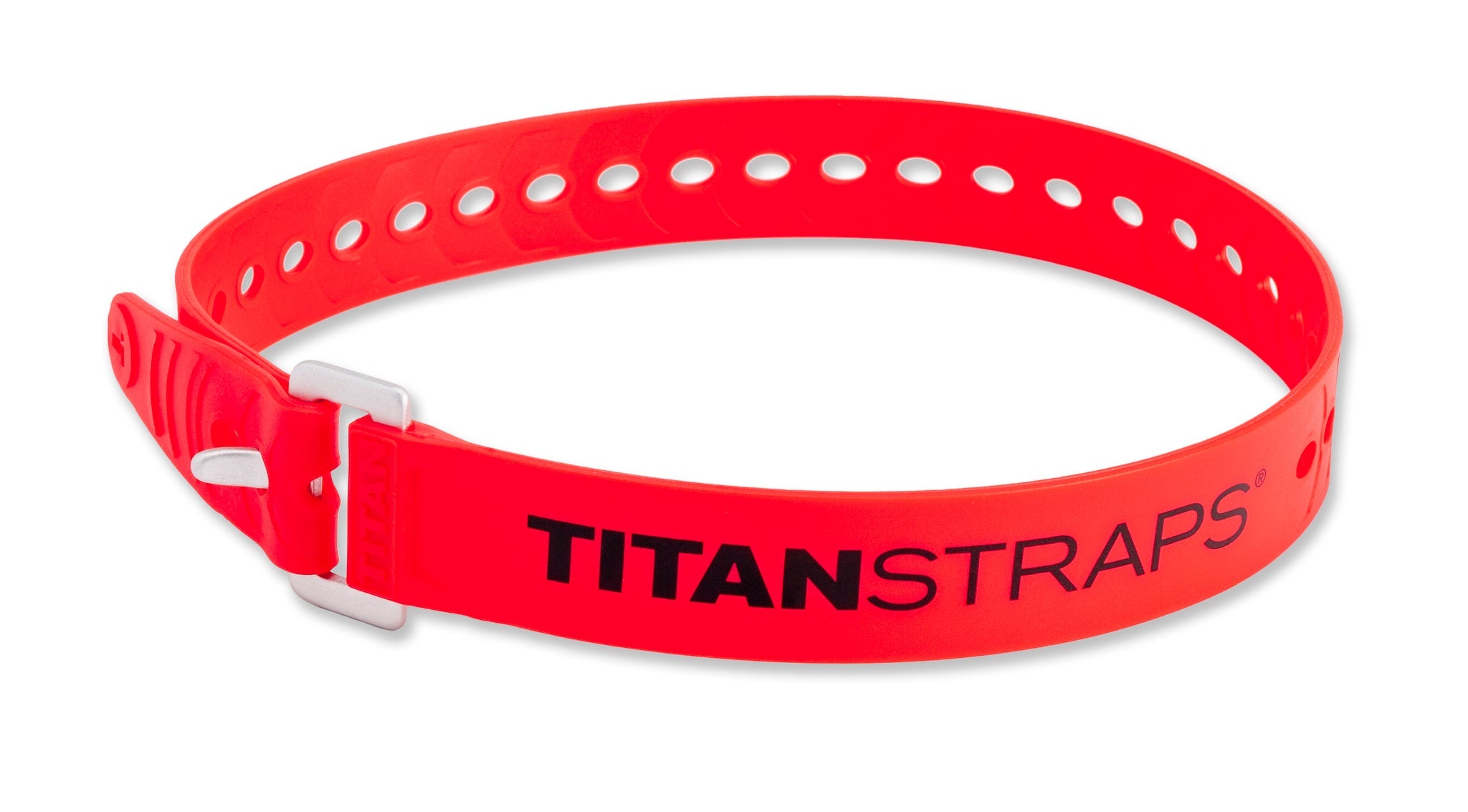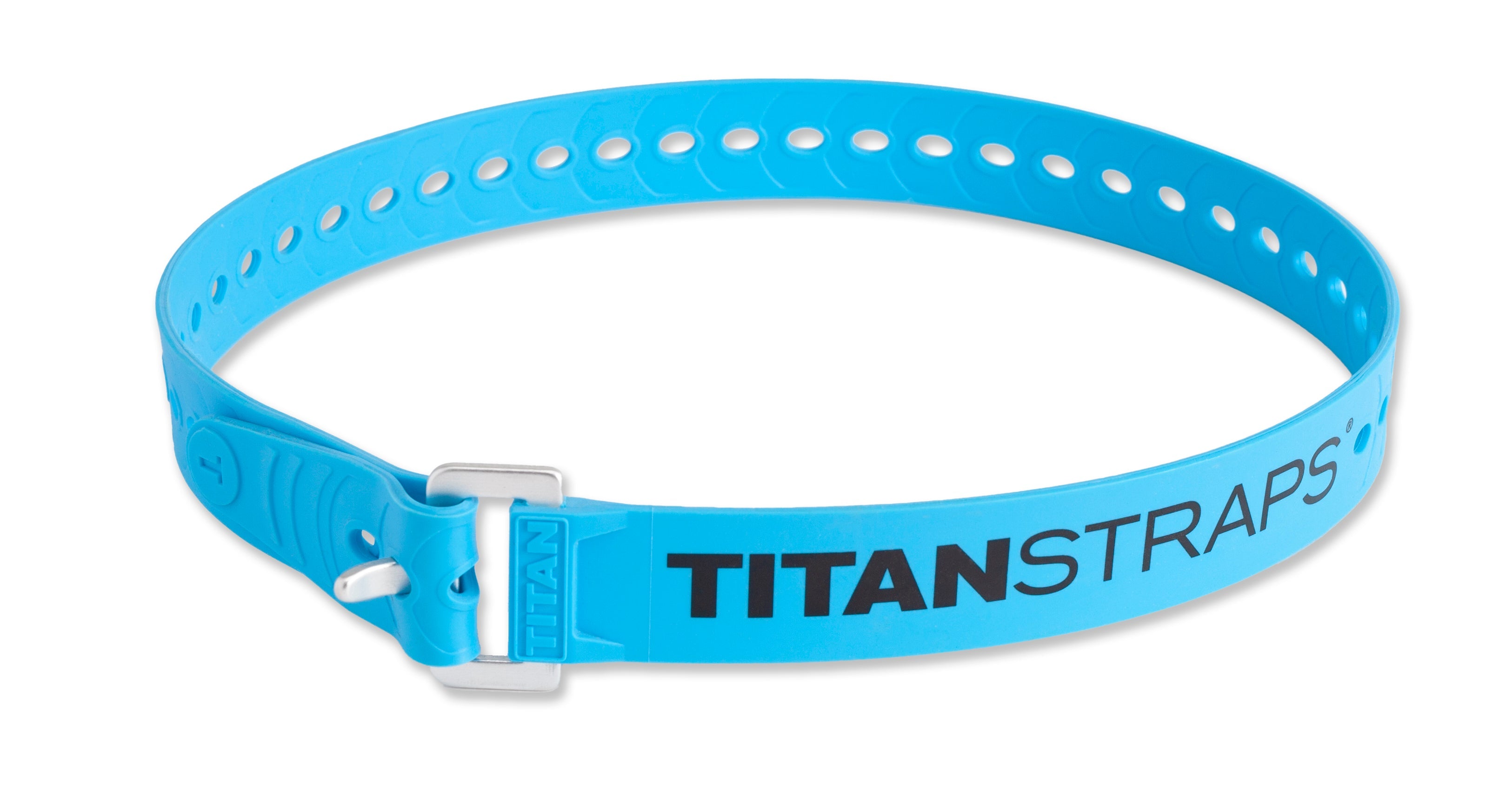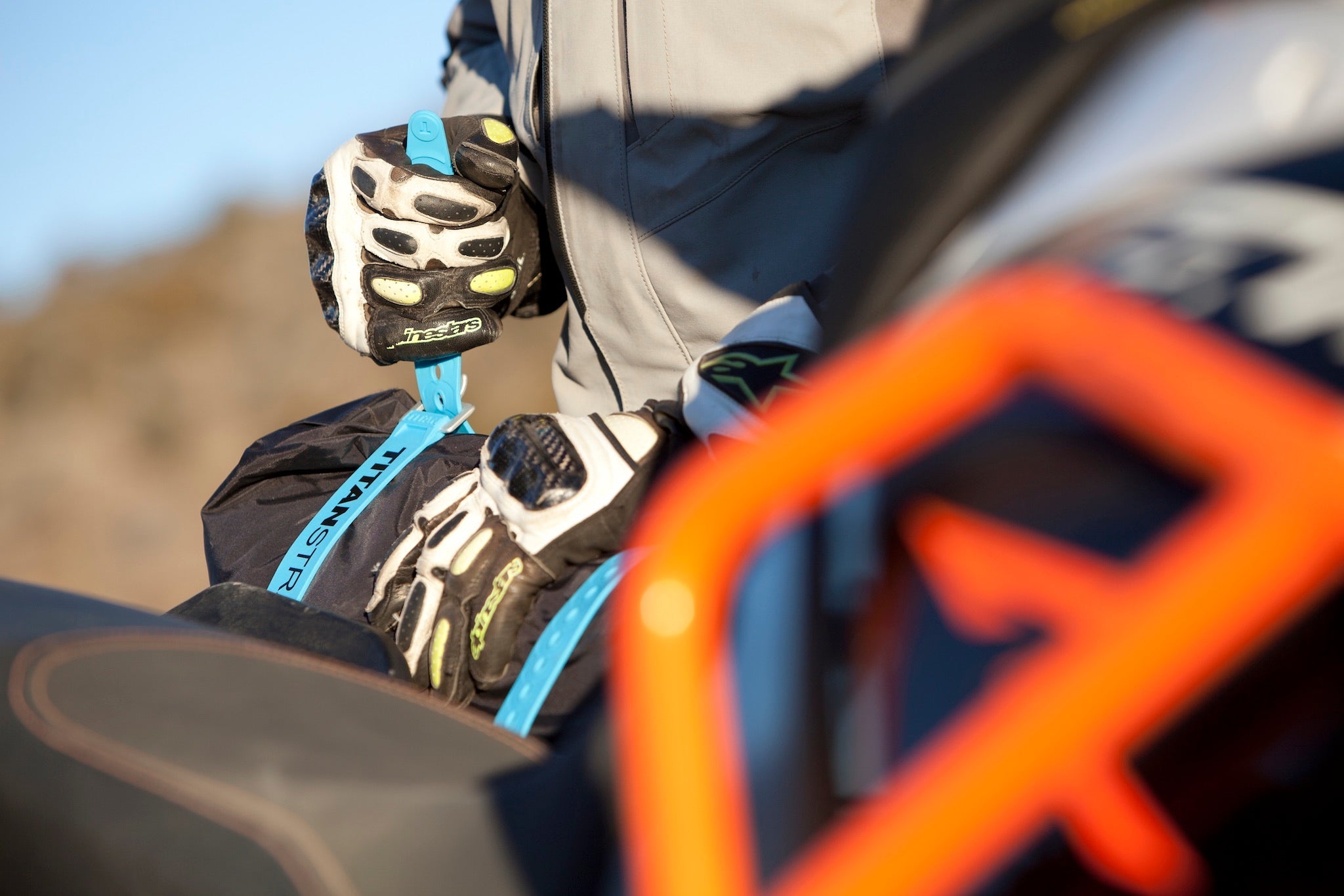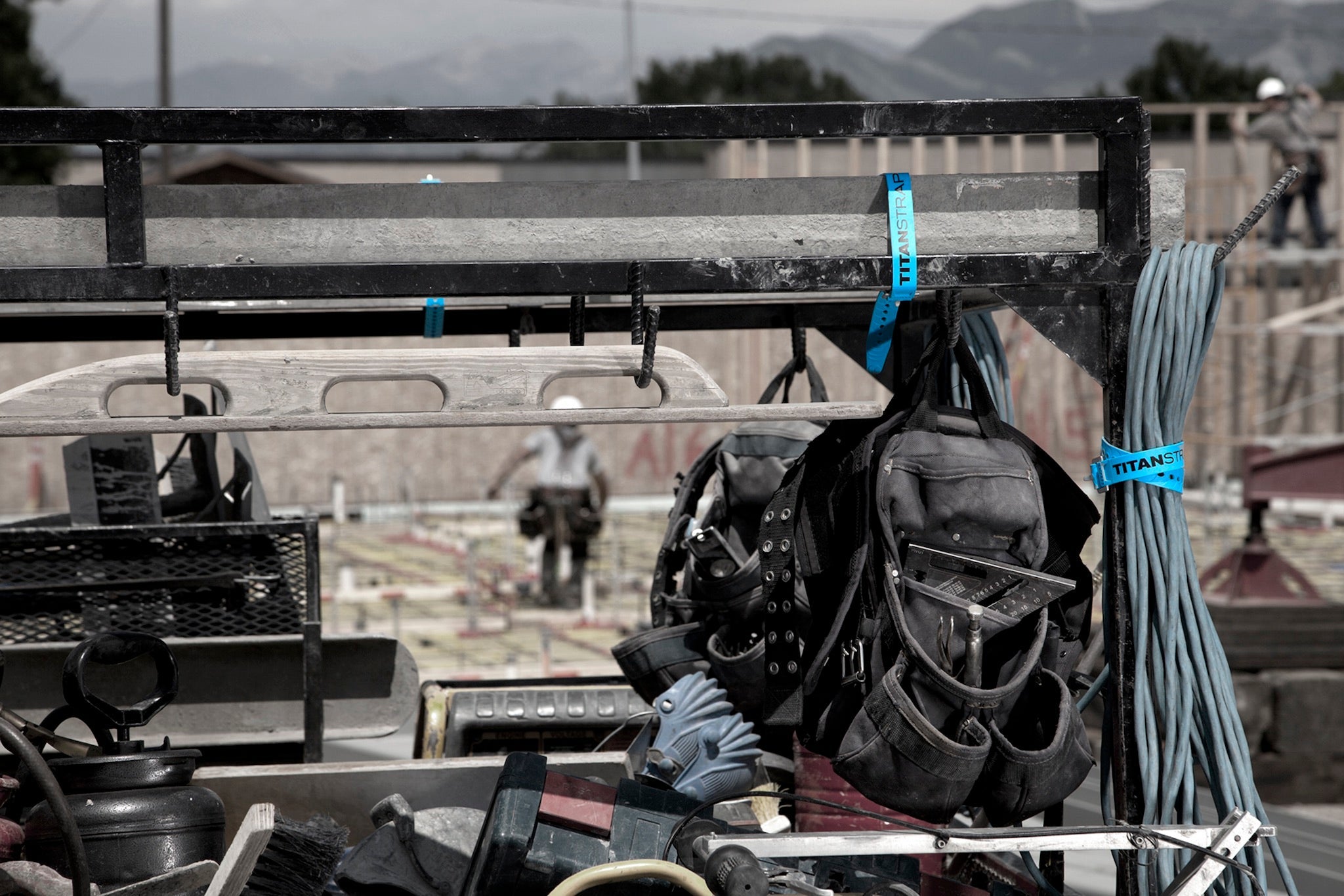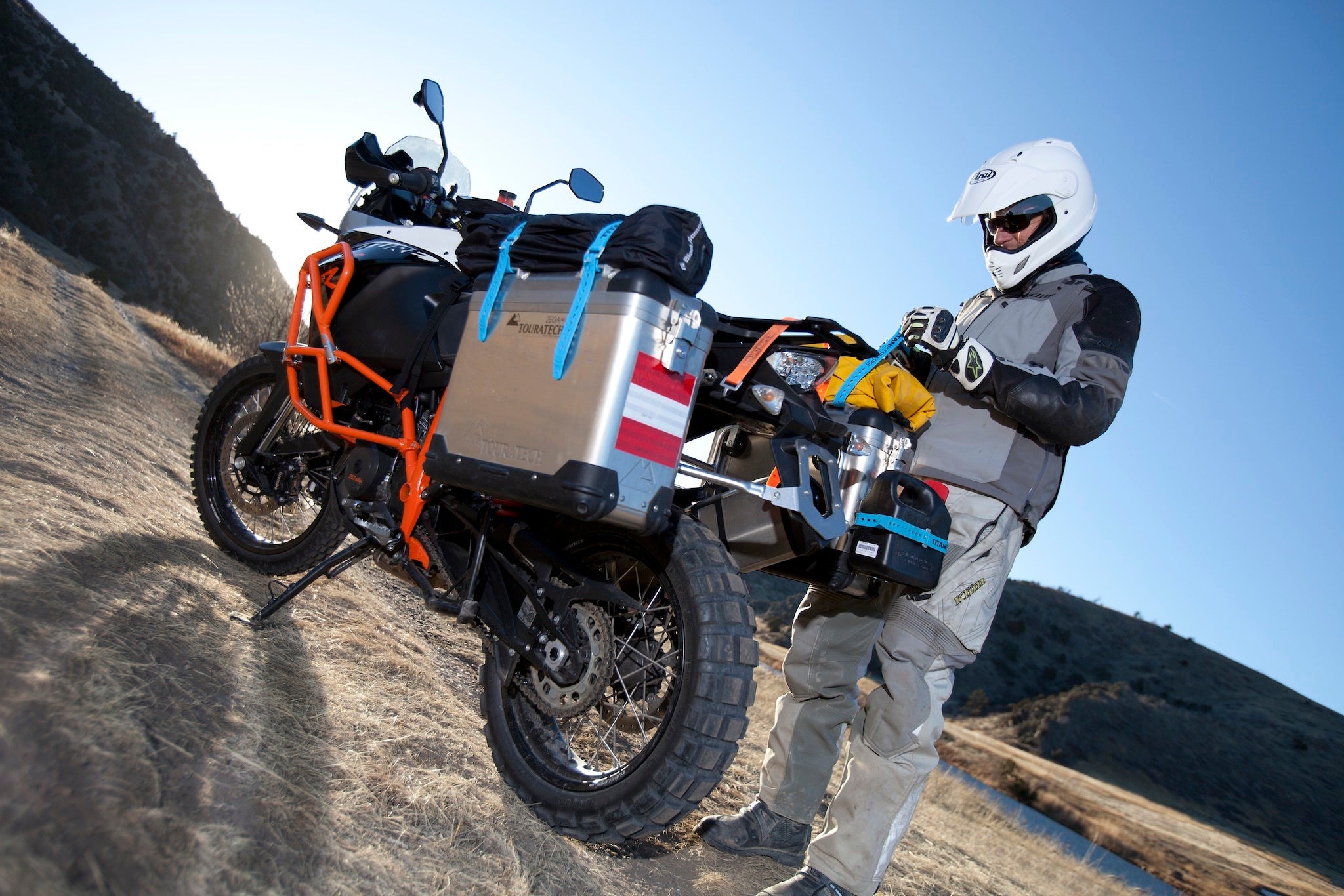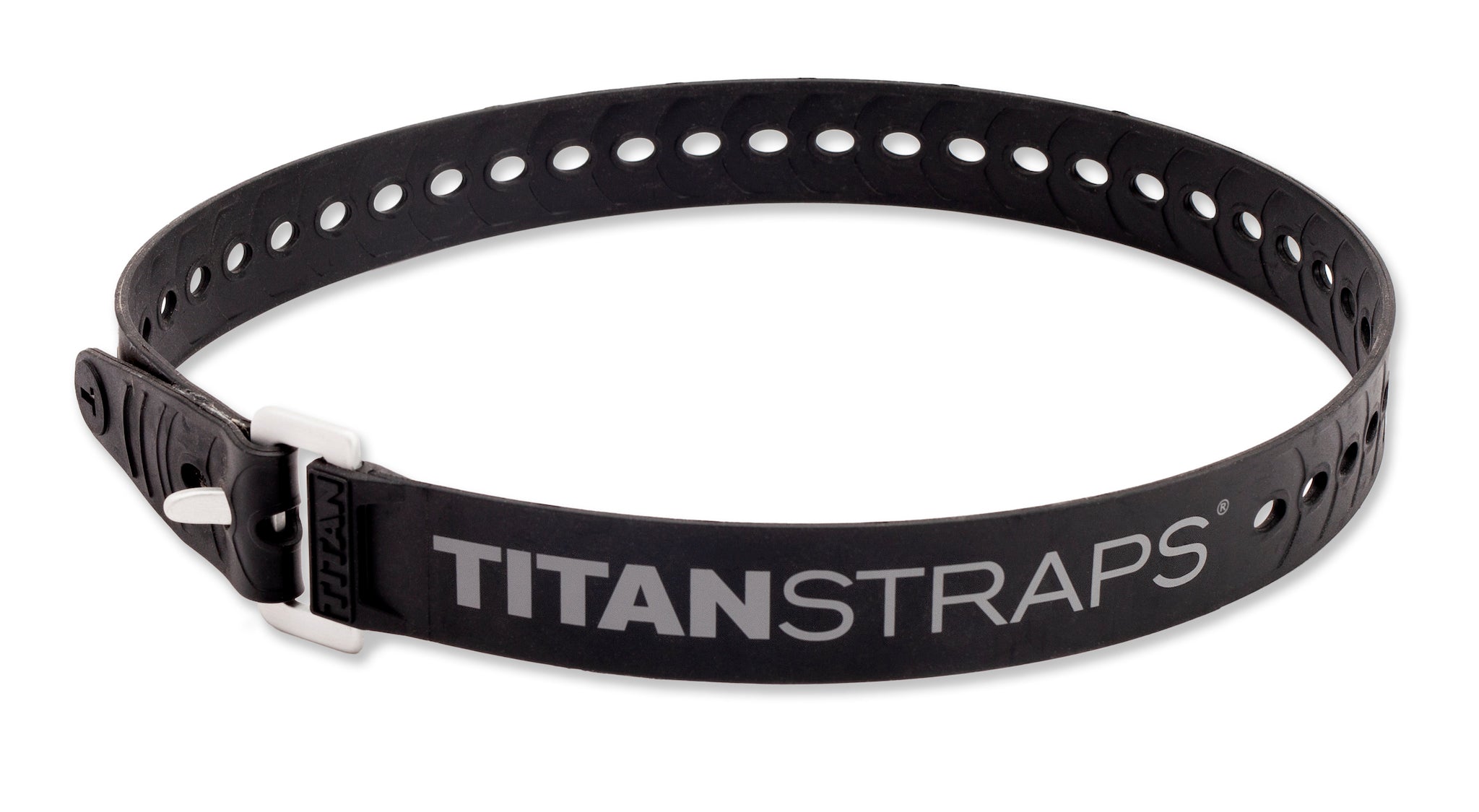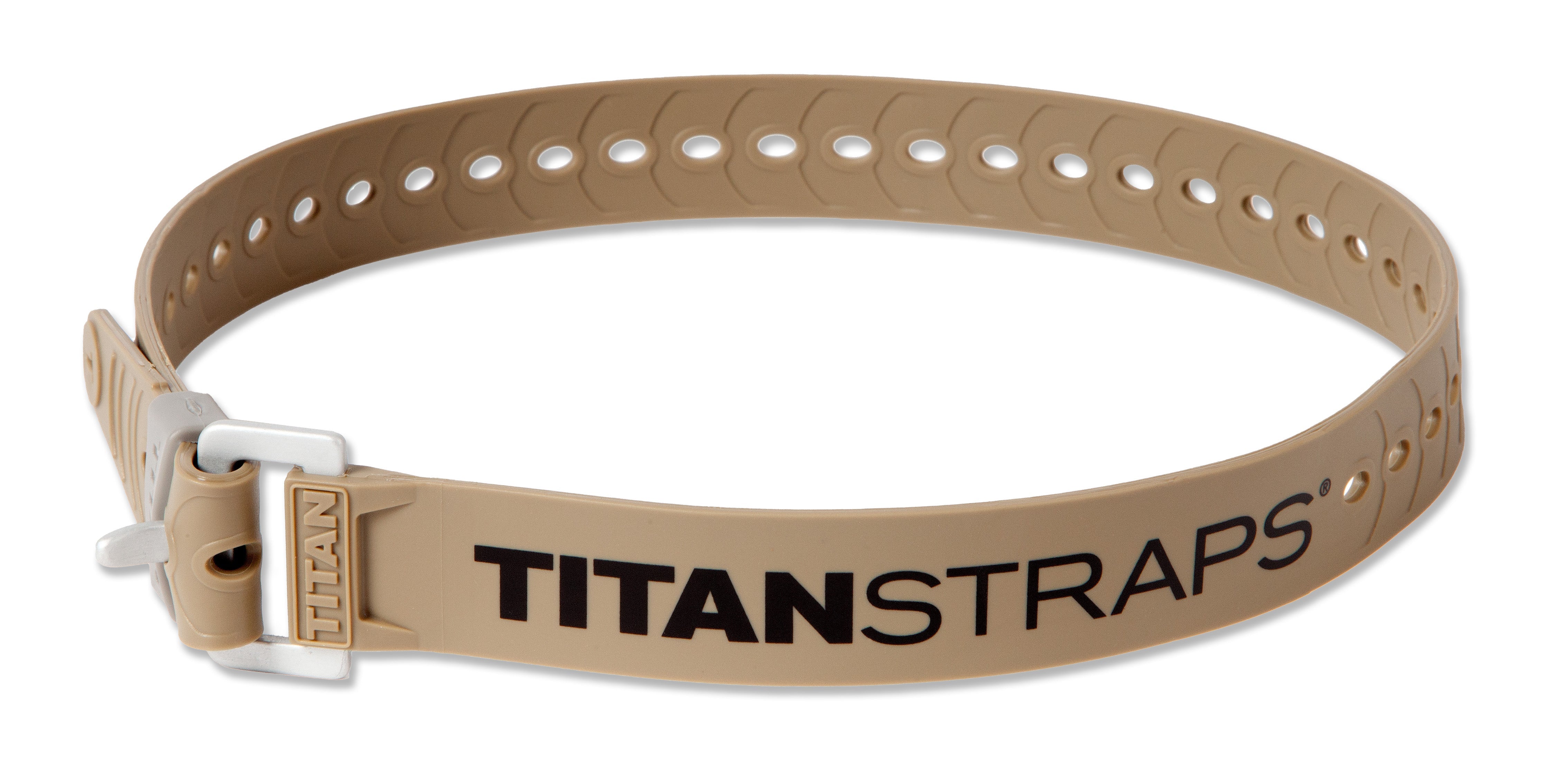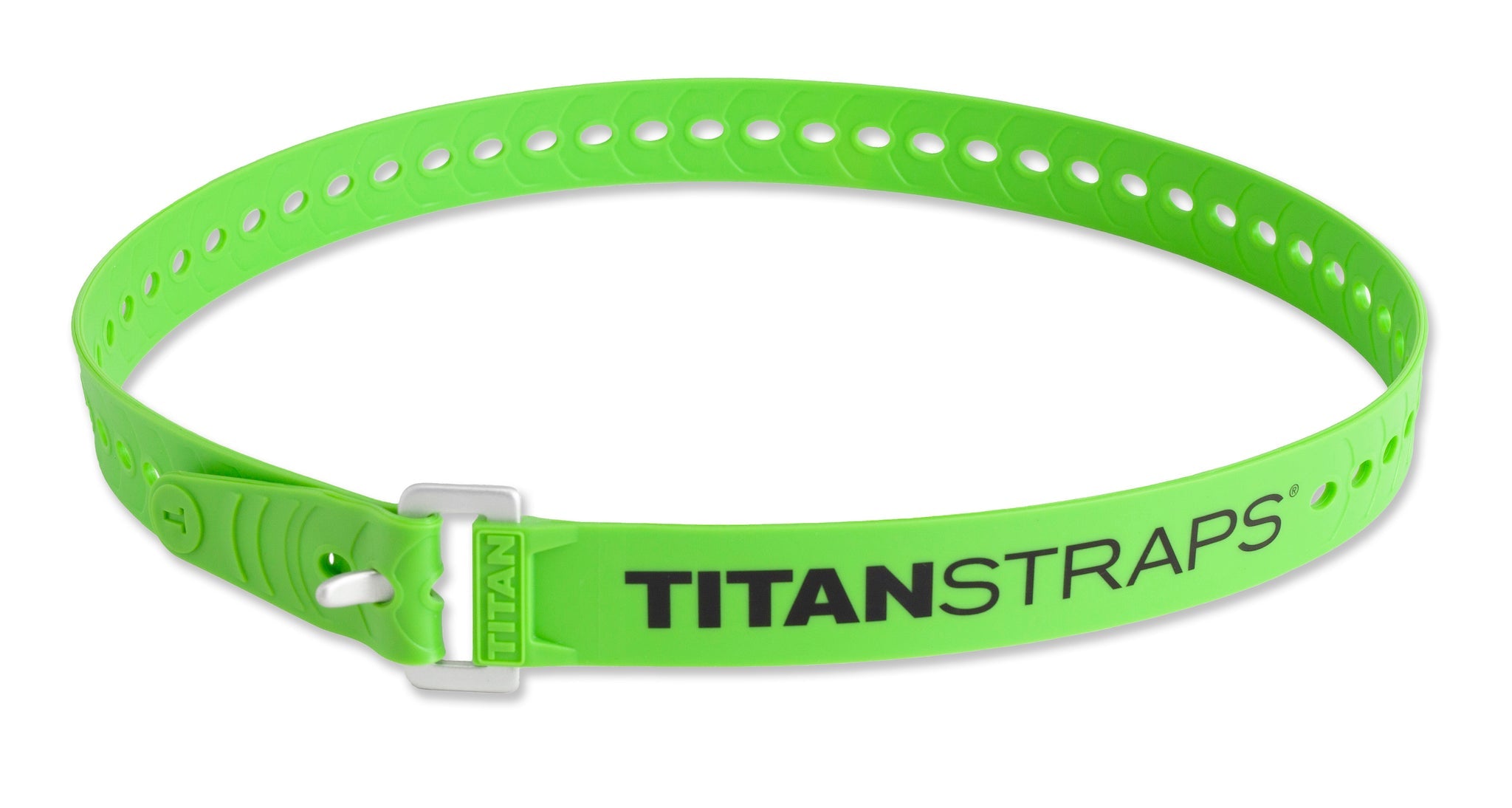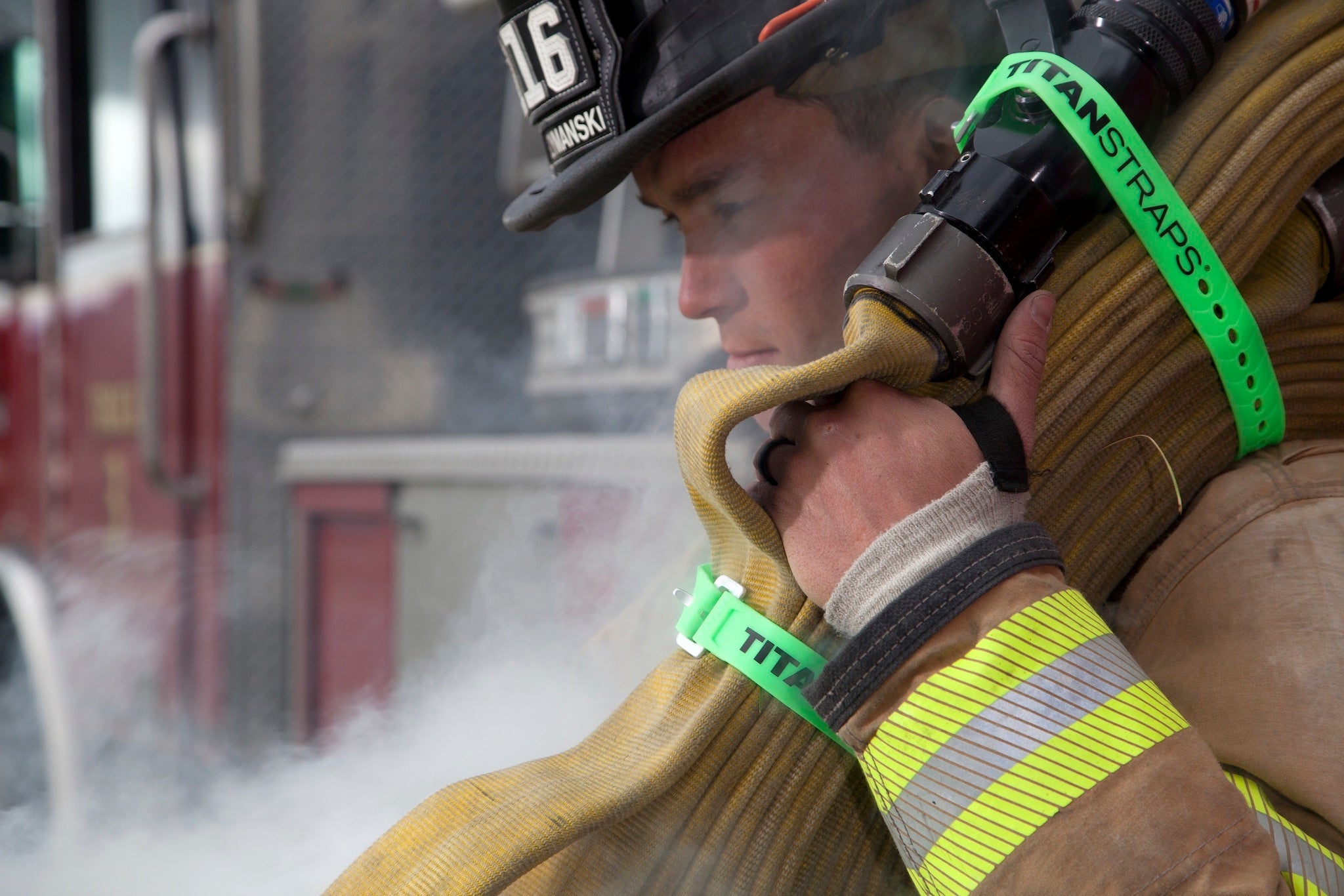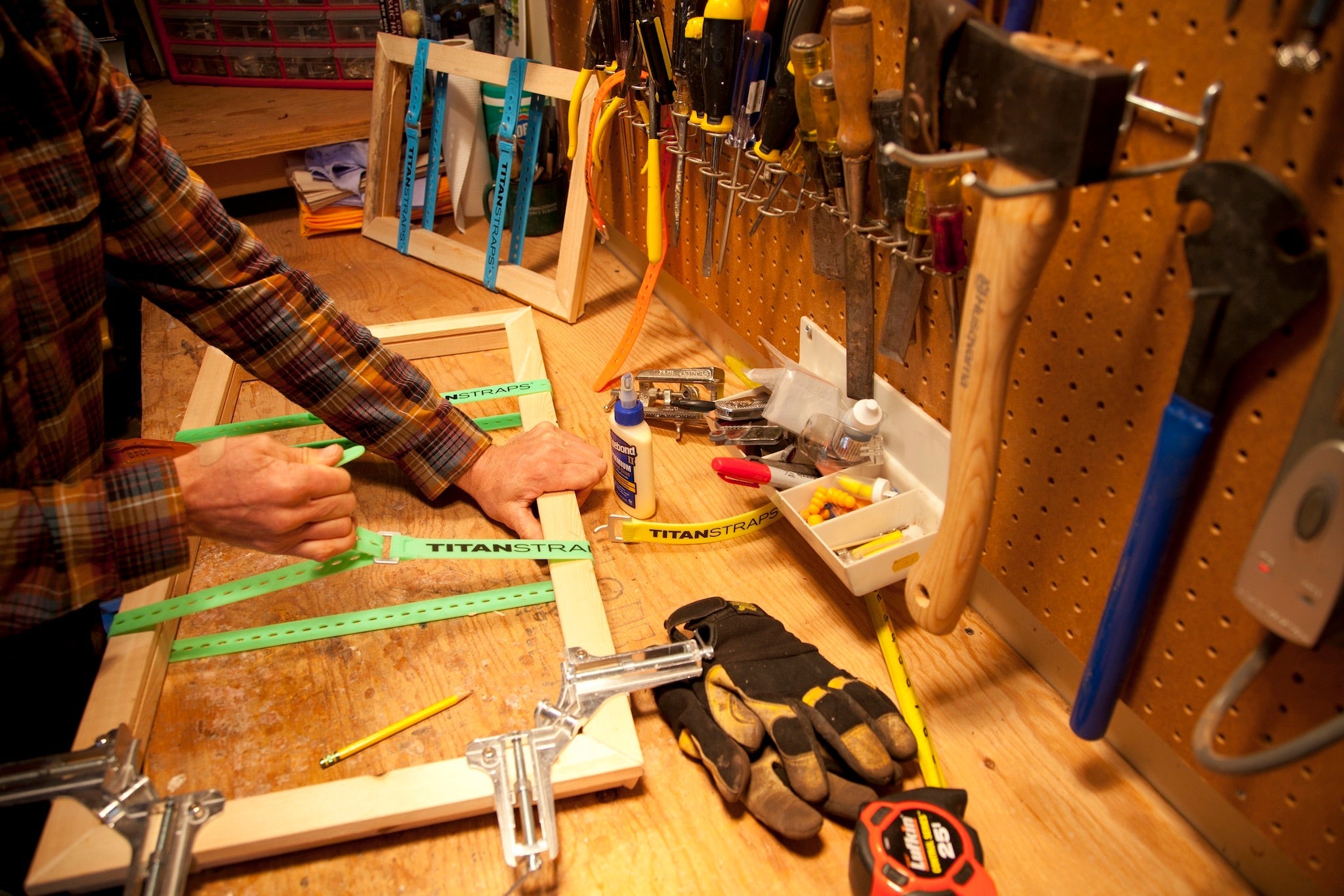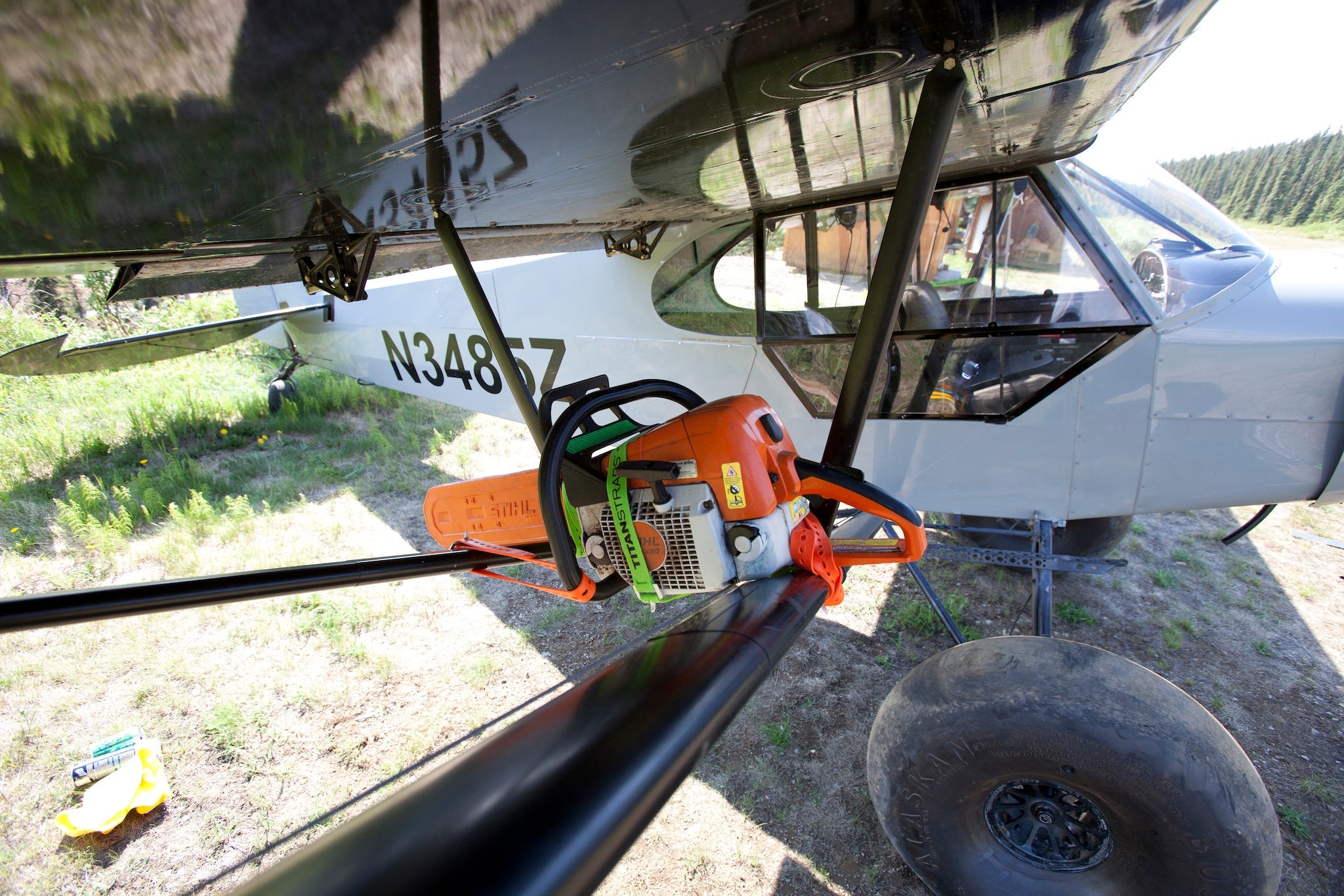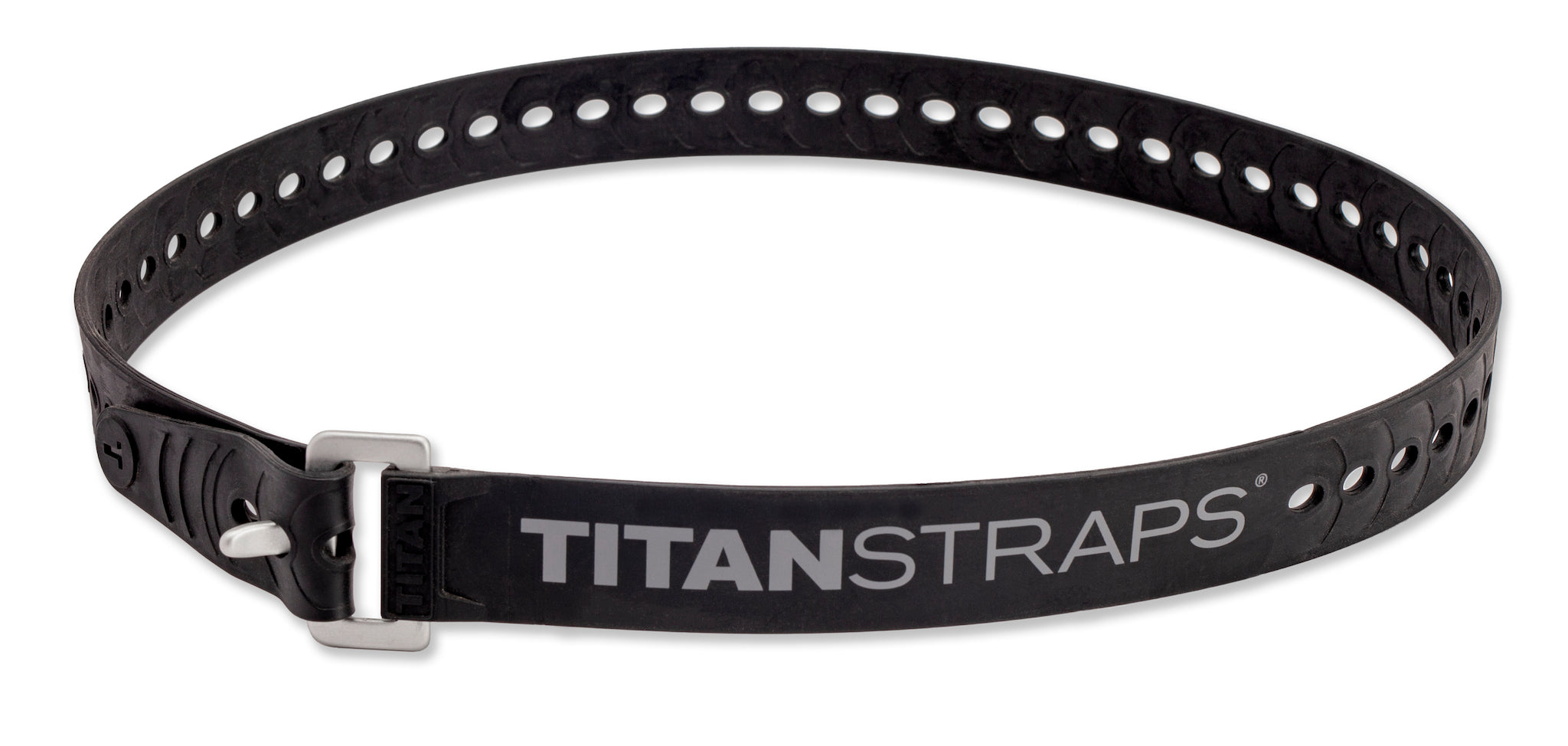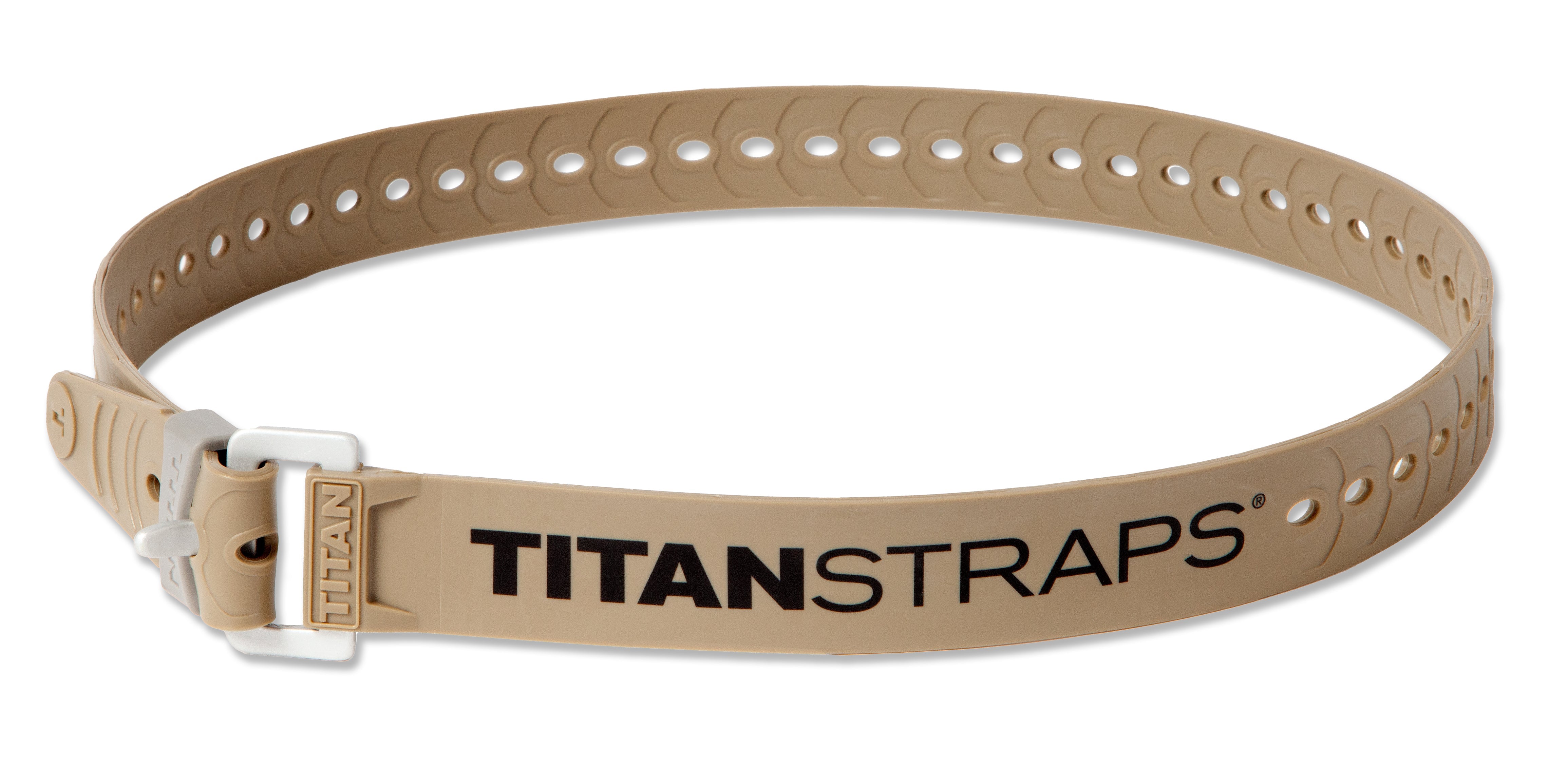FAQ - The Titan Straps tension strap
Titan Straps need enough tension so the load is secure and the flange/tooth of the buckle is tightly seated into the hole of the tension strap. If you can slide your fingers between the strap and the object you’re trying to secure, it’s too loose. We recommend always using two of our tension straps for critical loads, such as ladders on vehicle racks. For more instruction, watch our YouTube video, "How To Use Titan Straps Tension Straps."
Utility Straps are a lighter-duty tension strap with a "working load limit" of 60lbs. They’re ideal for home owners with projects around the house, recreationalists, bikepackers and bikerafters, mariners, skiers and anyone needing a handy tie-down.
The Industrial Straps are a stronger version of the Utility Strap and have a working load limit of 70lbs. Each Industrial Series tension strap is wider and thicker. They're ideal for people who use Titan Straps on a daily basis on the job or for individuals that need something beefier for a particular task.
To learn how to use our straps, visit our YouTube video, "How to Use Titan Strap Tension Straps."
Titan Straps remain pliable and semi-stretchy in frigid temperature extremes. However, like any polymer, this tension strap will become less stretchy as the temperature drops below freezing.
At temperatures greater than 210ºF the material will slowly move towards the consistency of bubble gum on hot pavement and shouldn’t be used for service.
Yes. Titan Straps excel in hot, sunny climates. For people living in Arizona, Florida or Hawaii, these tension straps are perfect!
In most situations the material we use is highly durable, can handle a wide temperature range and is long-lasting. But there is a kryptonite for this "super material" – hydrolysis. If Titan Straps are exposed to the combination of moisture and warm temperatures for prolonged periods, the material will degrade. In contrast, Titan Straps can handle prolonged contact with cold water.
It depends. In many cases, Titan Straps do very well in chemical environments. However, they don’t like aromatic solvents such as toluene, benzene or ketones (examples: MEK or Acetone) or certain esters like Ethyl acetate (example: Nail Polish).
The buckle won’t have issues with corrosion for the life of the product. The buckle is made from aircraft quality aluminum and has been heat-treated, polished and glazed with a finish.
We’ve designed the buckle with enough space to allow the strap to be threaded through the buckle 2x. Anytime, the strap is "double wrapped" around an object, the surface area/contact increases, eliminating the risk of a shifting load. Simply wrap the excess strap around the item 1-2x, before threading the tip through the buckle. This will remove the slack in the tension strap.
The logo of each strap must be facing outward, so the flange (tooth) of each buckle is facing the same direction. Thread the tip of one tension strap (A) through the buckle of the second strap (B). Then, pull on the tip of strap (A) and place the flange through one of the holes. Tension will keep the two straps together.
Titan Straps are placed in a "looped configuration," the same way as intended use. Once in a looped configuration, the strap is secured between two points in our testing equipment. The machine pulls on the two points, and the loop is stretched until failure. The testing equipment records the data. We random sample Titan Straps tension straps and test in various conditions to make sure you’re getting the very finest strap available.
Numerous folks have reviewed Titan Straps online. Check out Chasing Tales Outdoors, "Pro Tip #3: Titan Straps" to learn how to use them for hunting deer. Check out Acme Tools blog post, "Titan Straps Adds Simplicity to Securing Gear," for an overview of how these tension straps work. And learn more about how contractors can use Titan Straps to secure loads on trucks or "just about anywhere," from their YouTube video, "Best Ratchet Strap Alternatives | Titan Straps."




